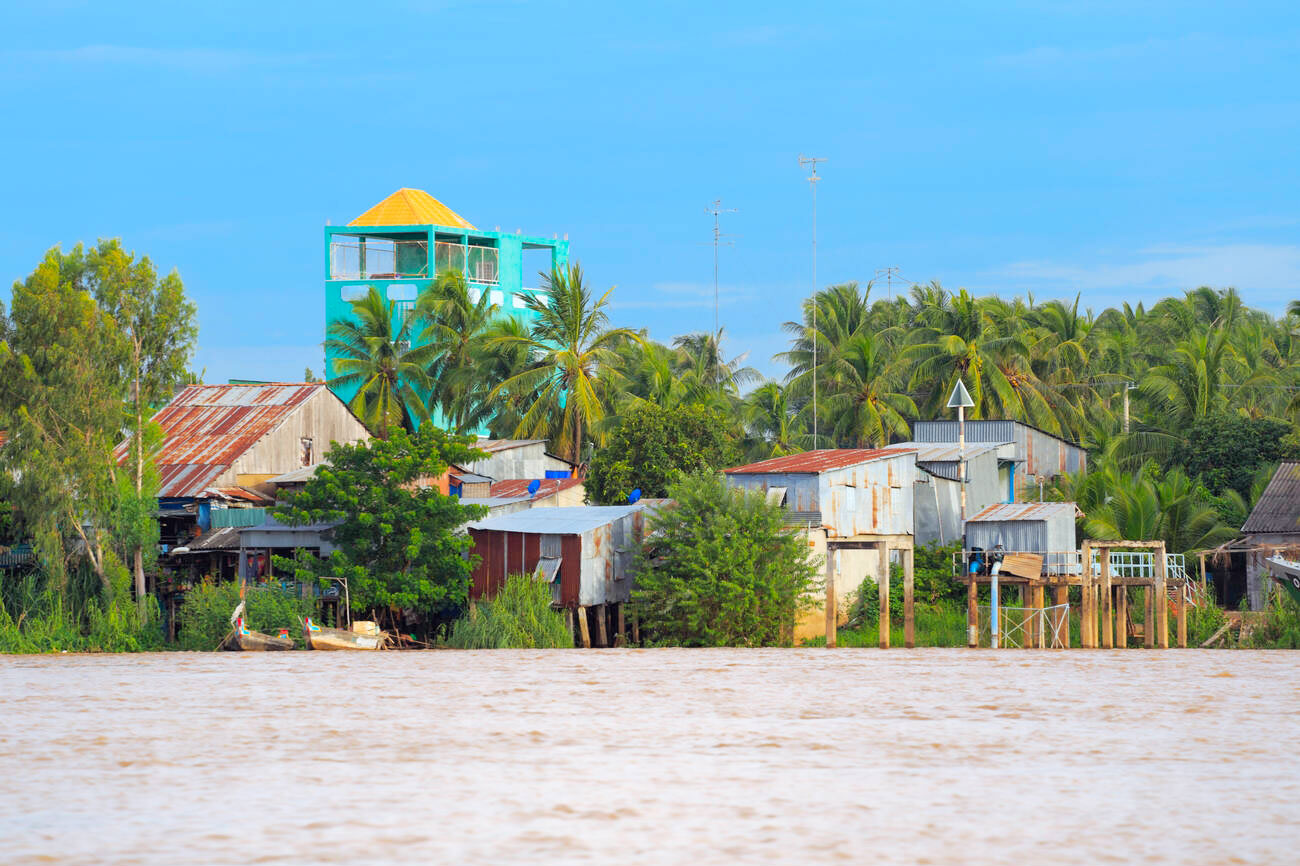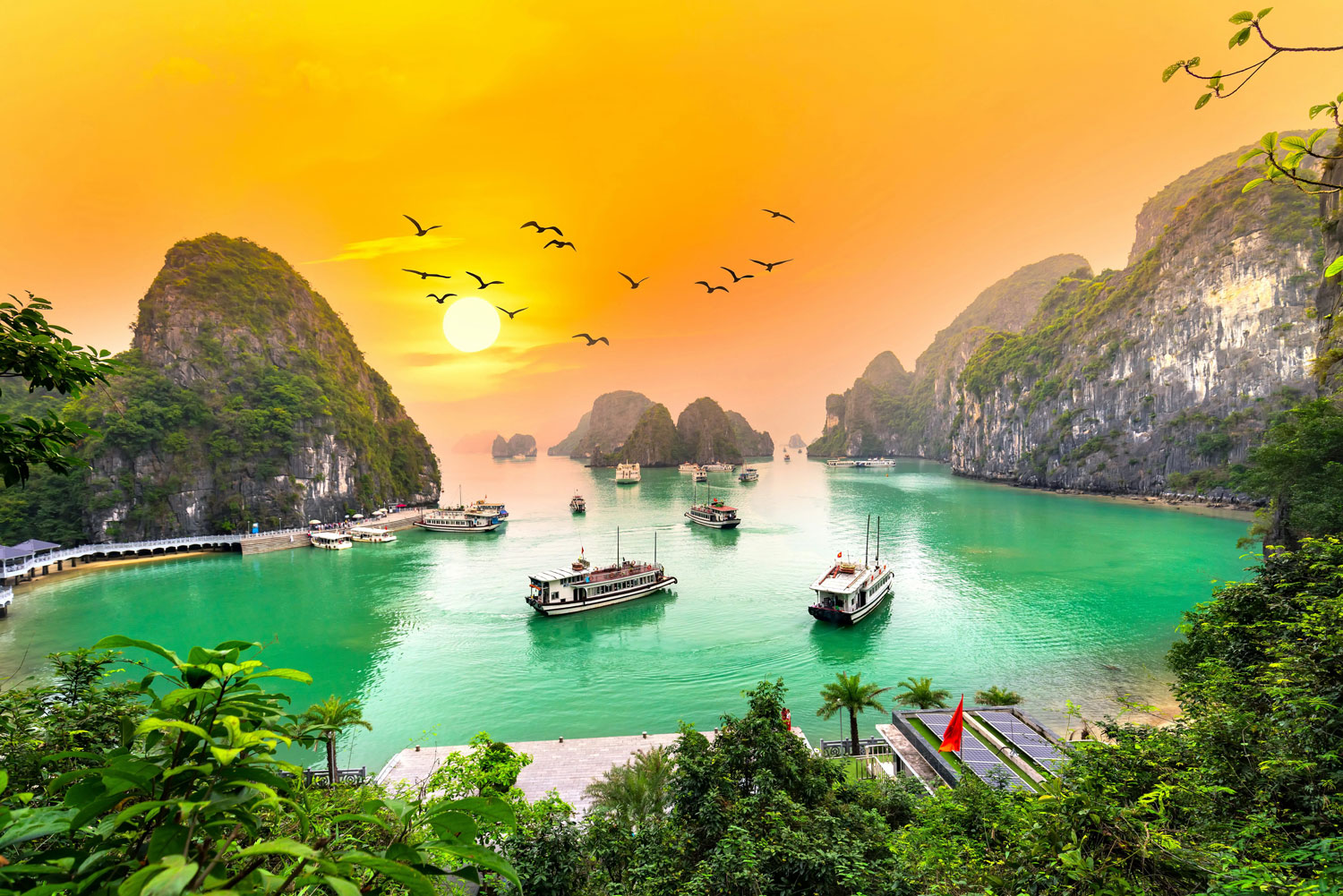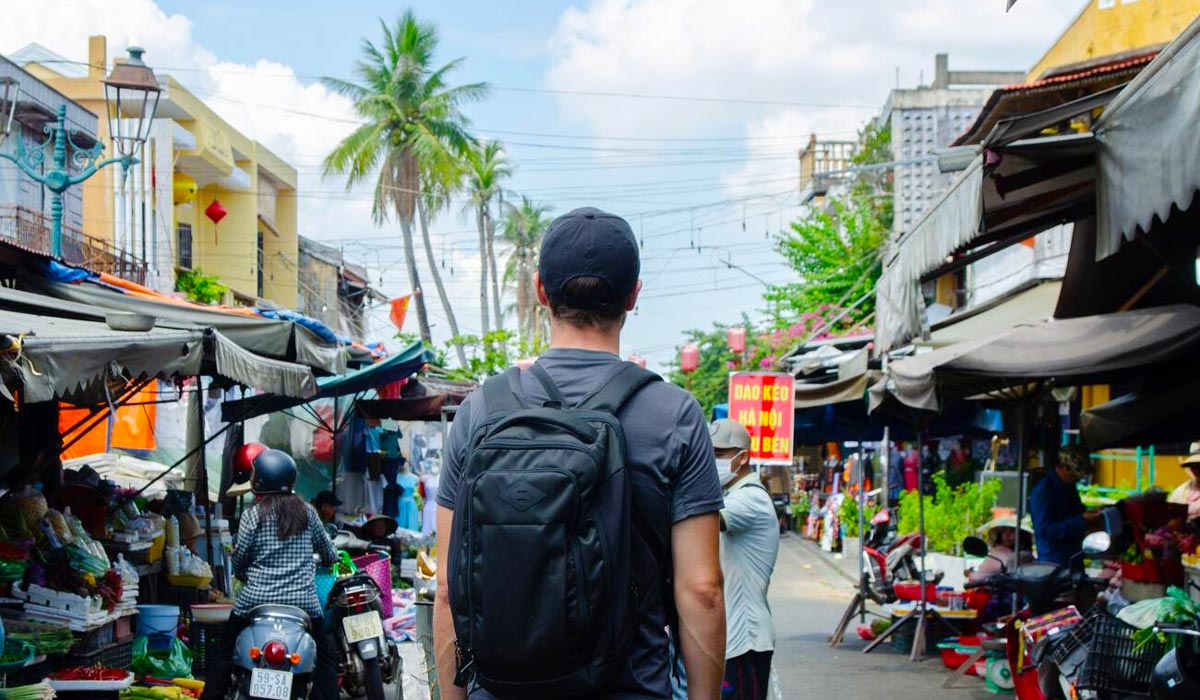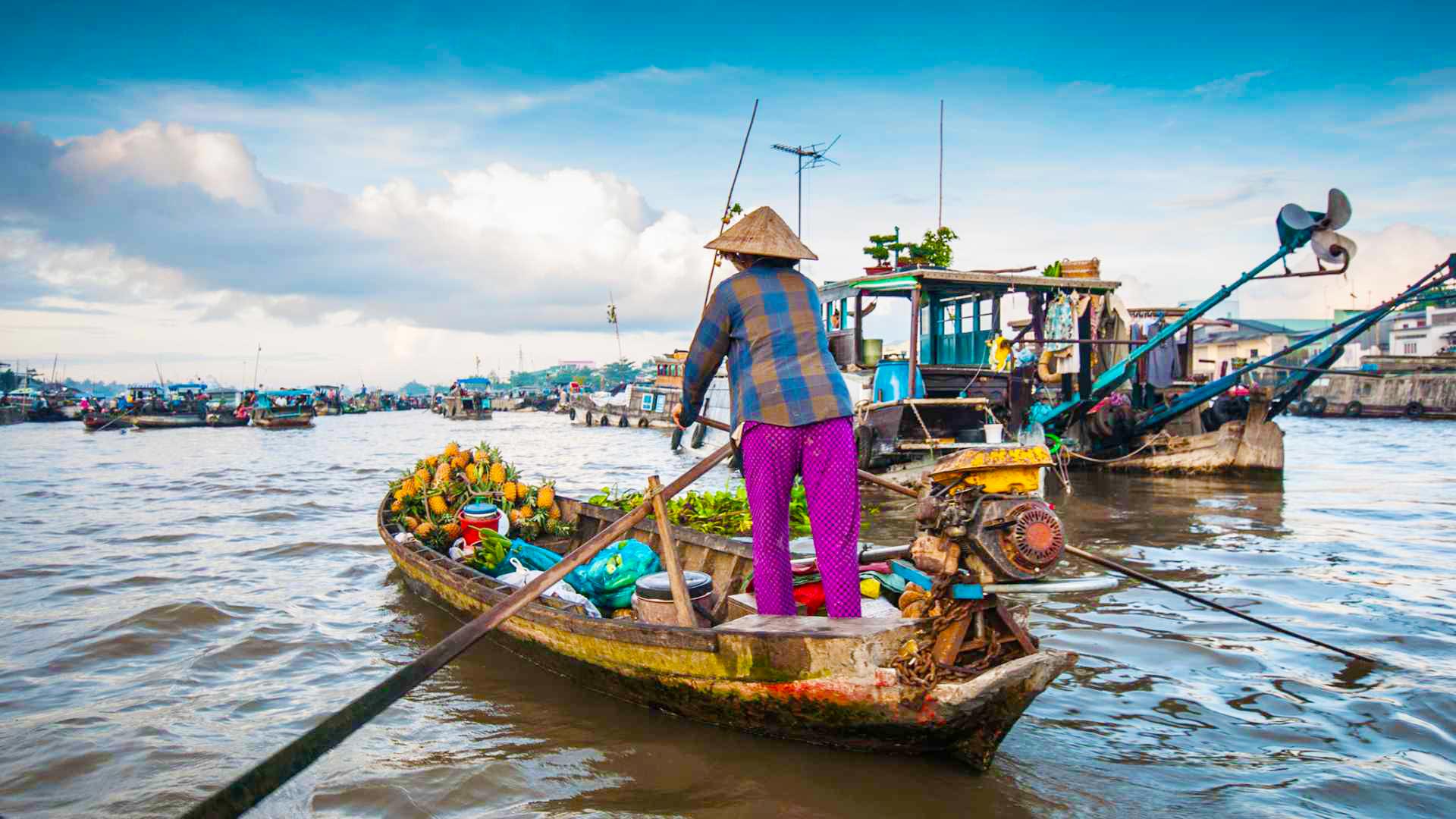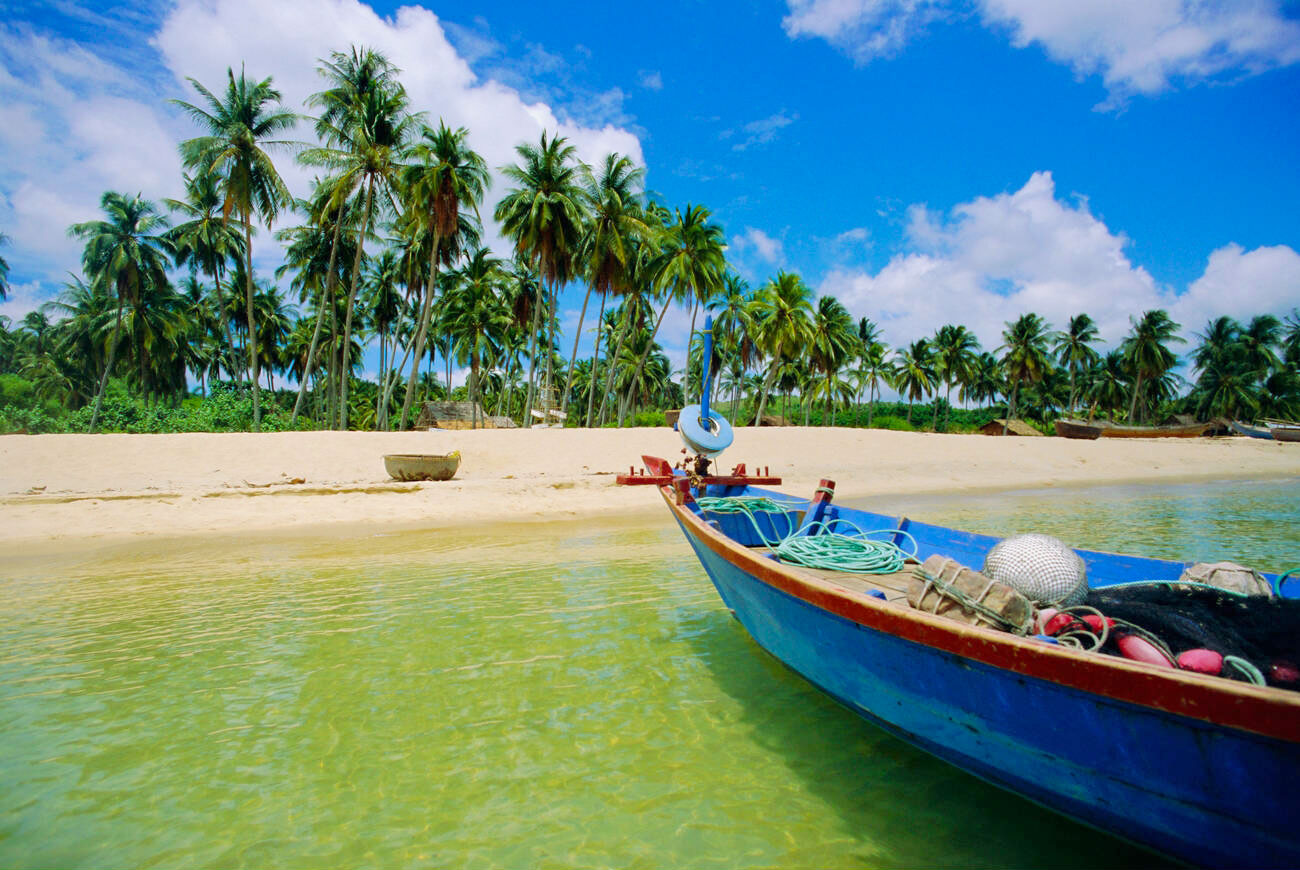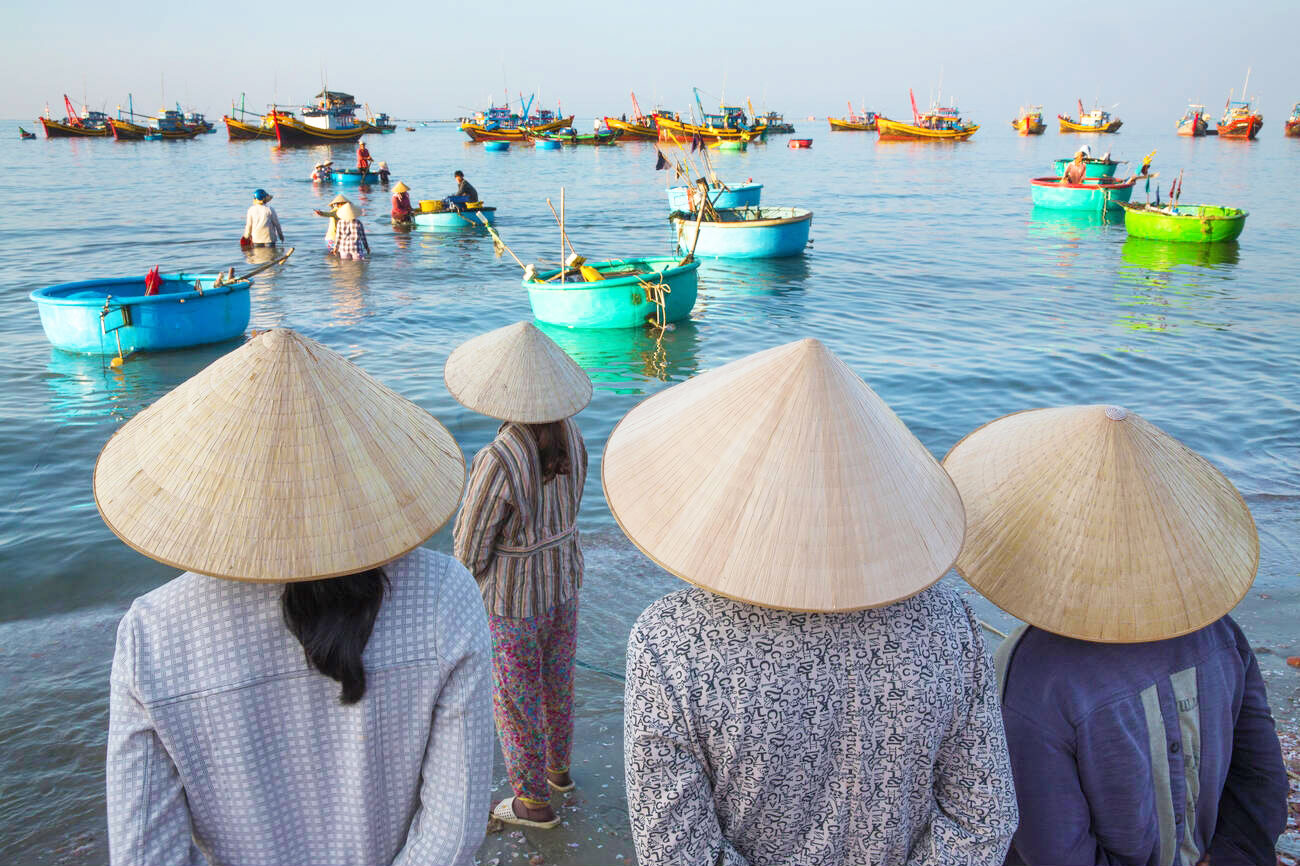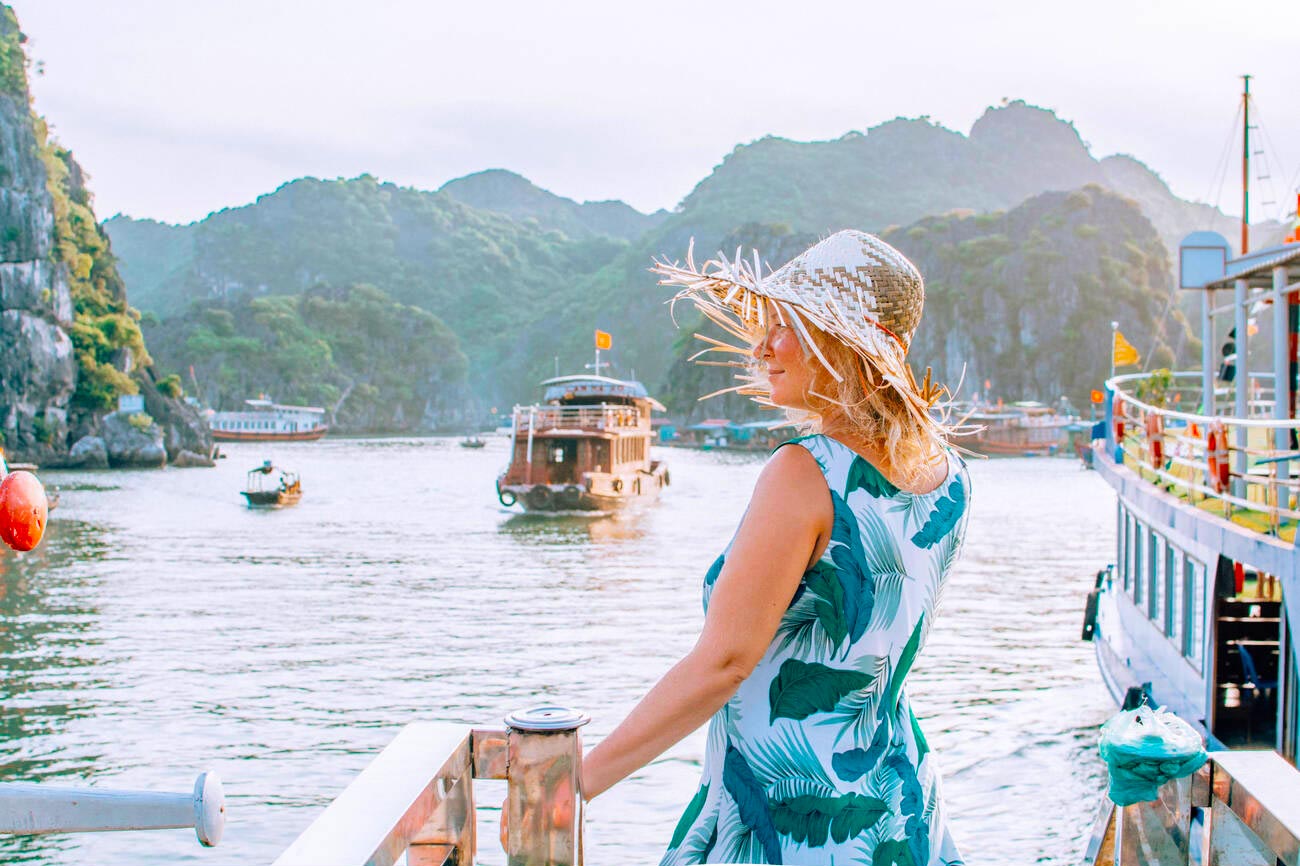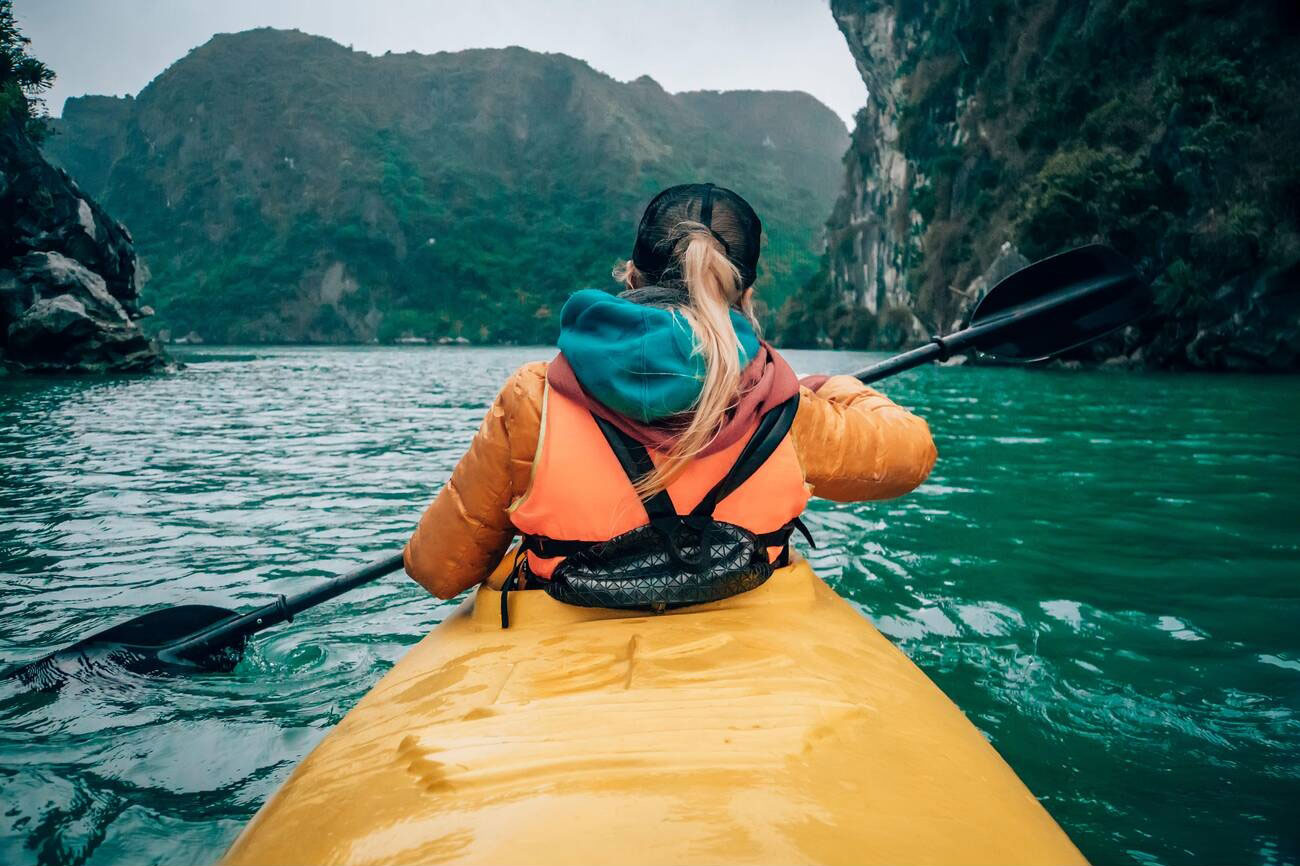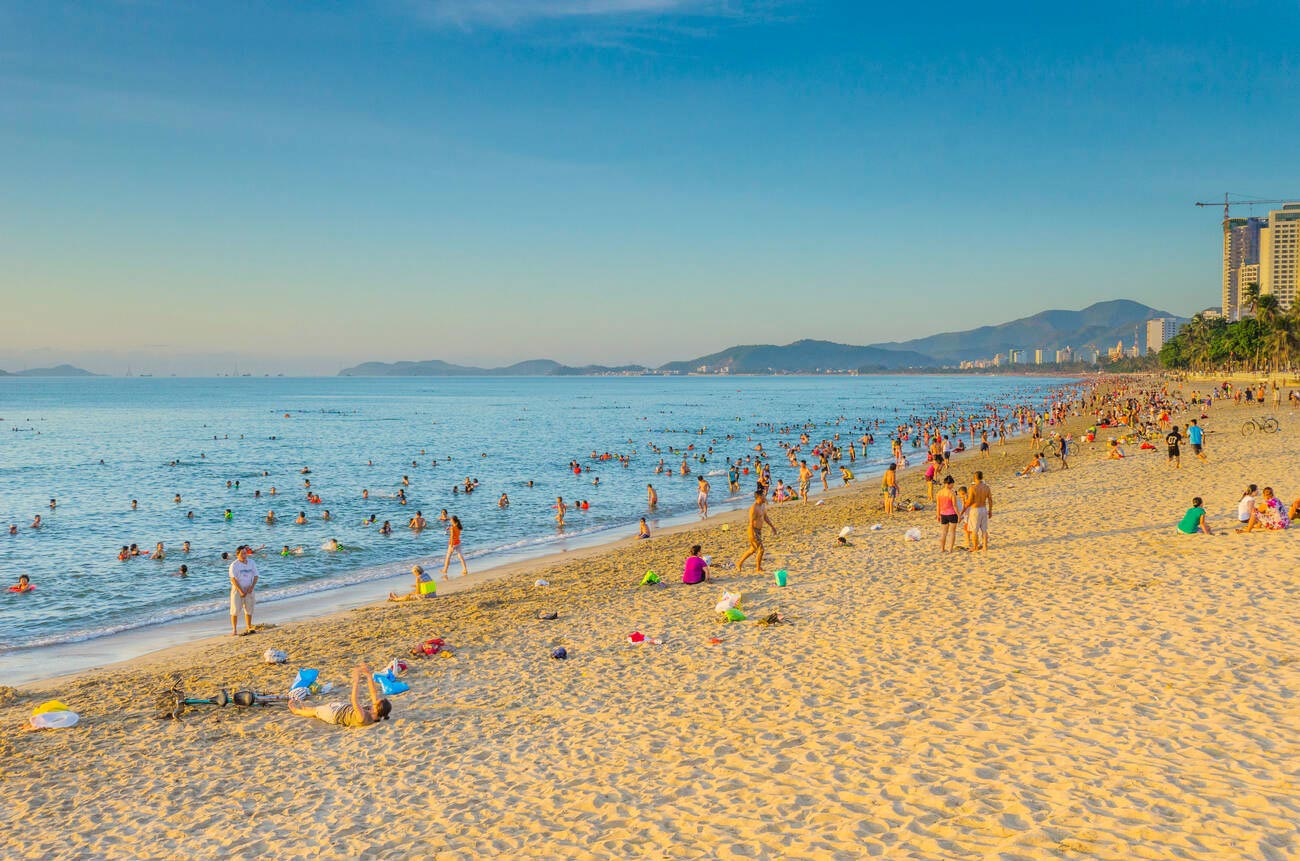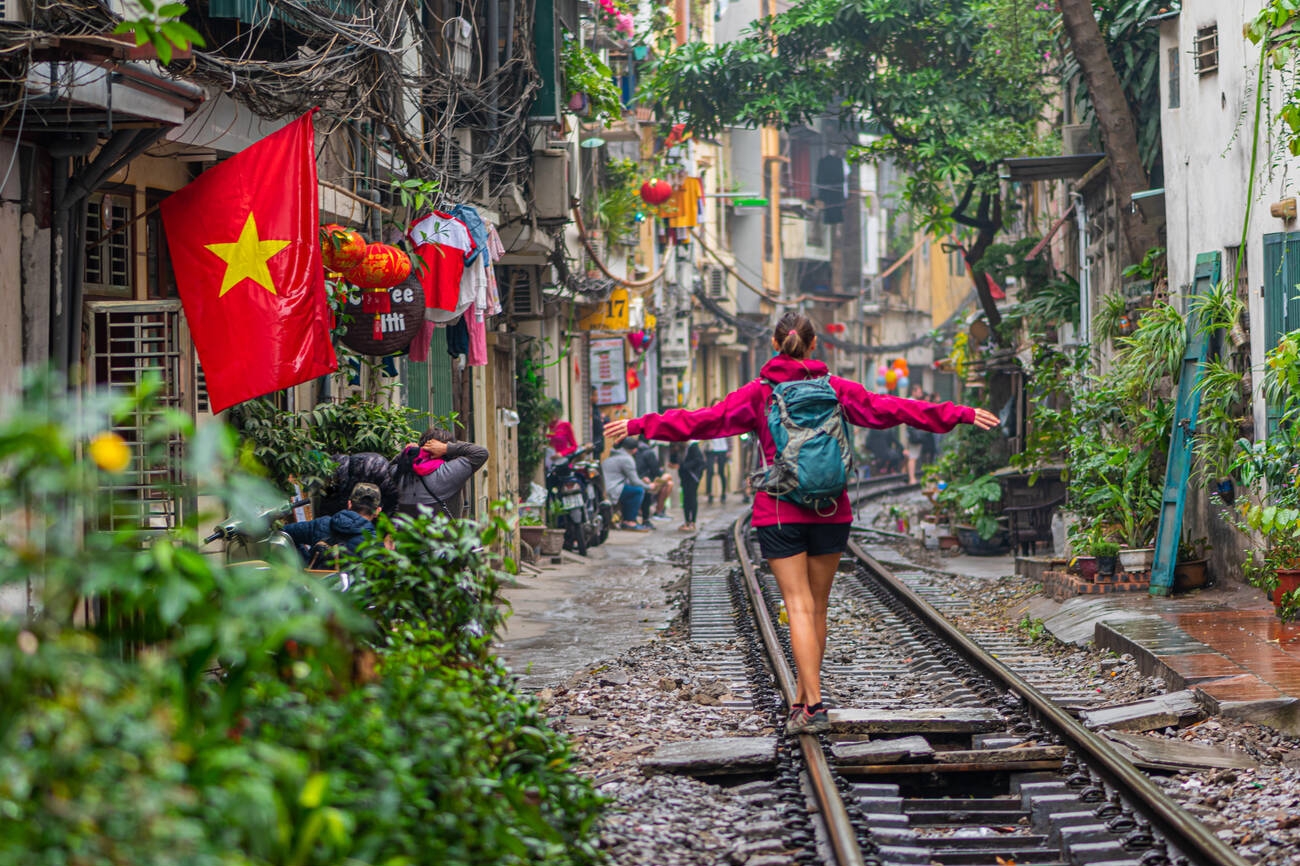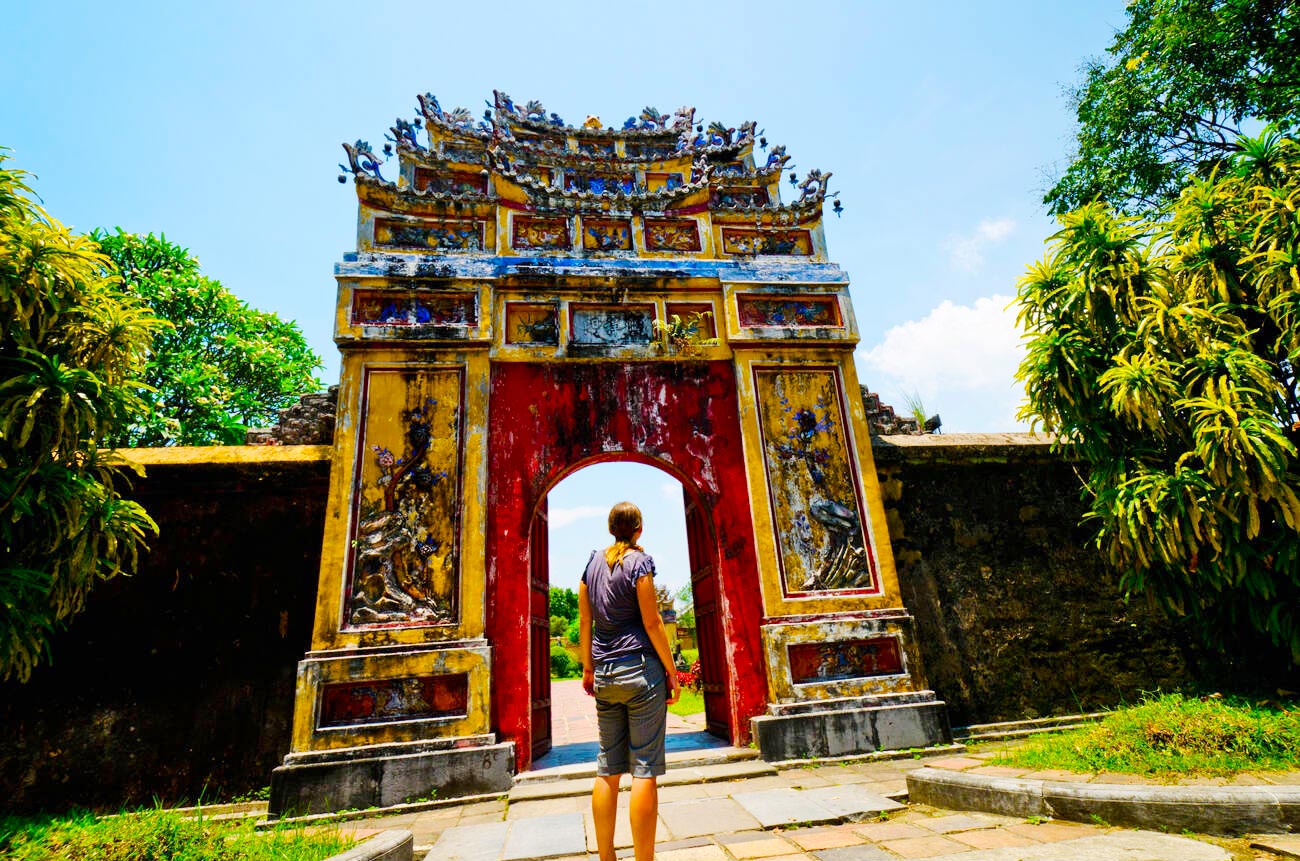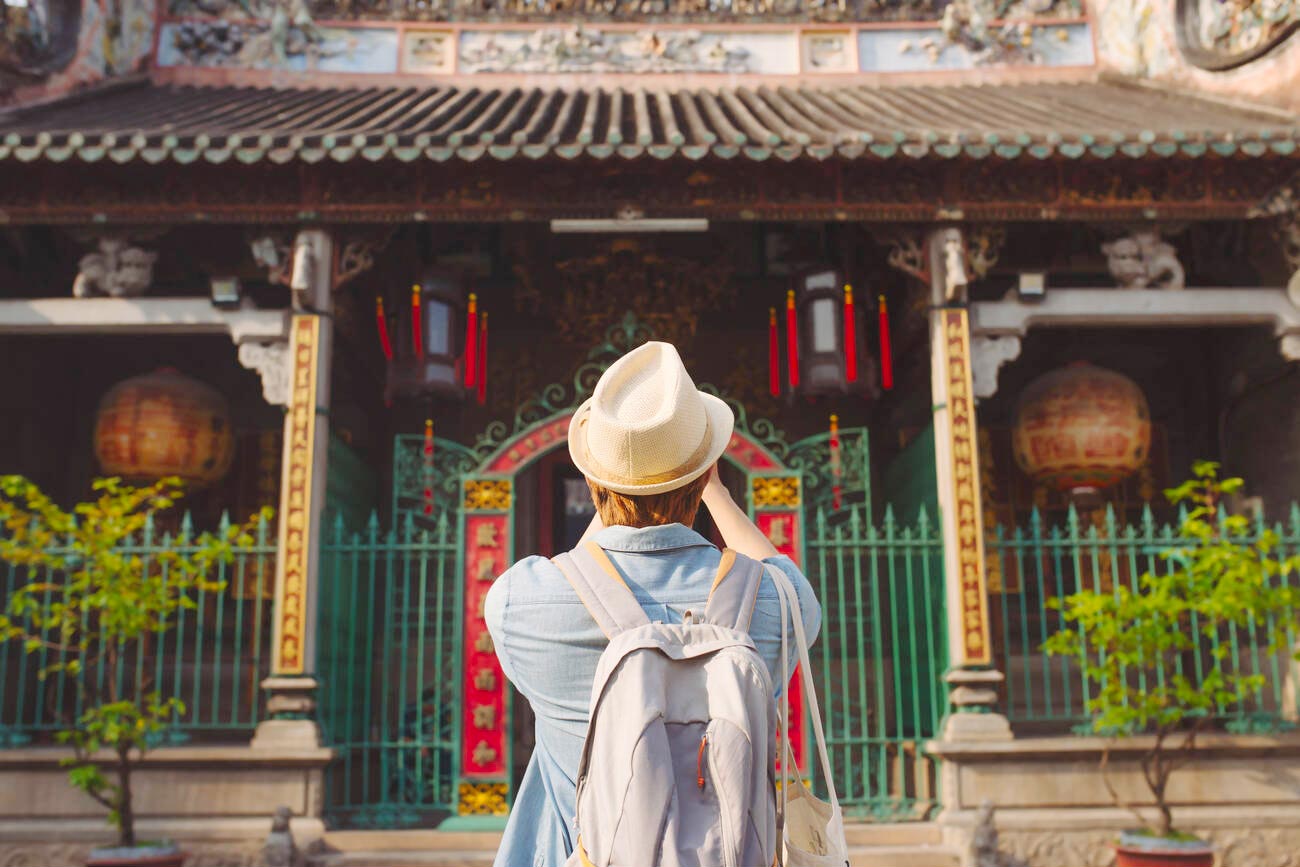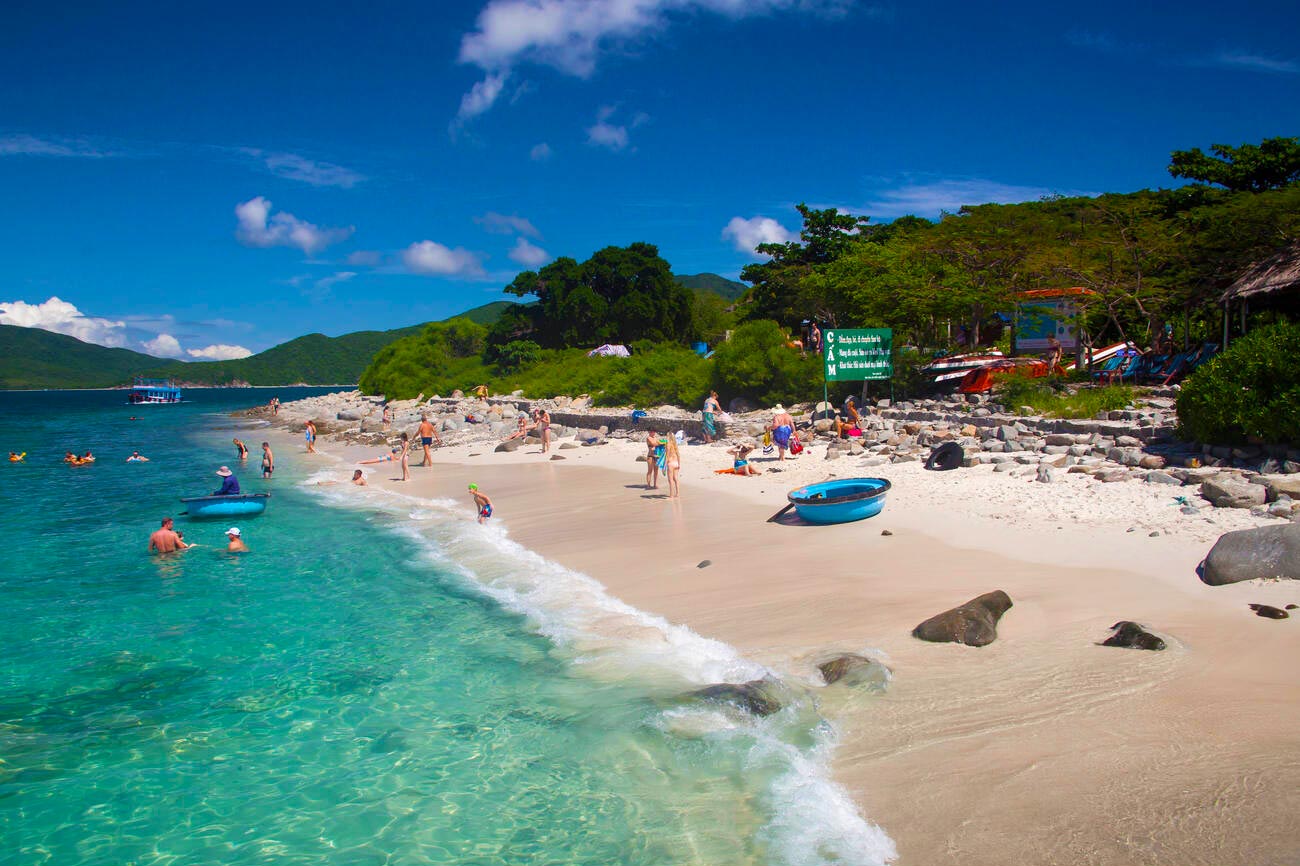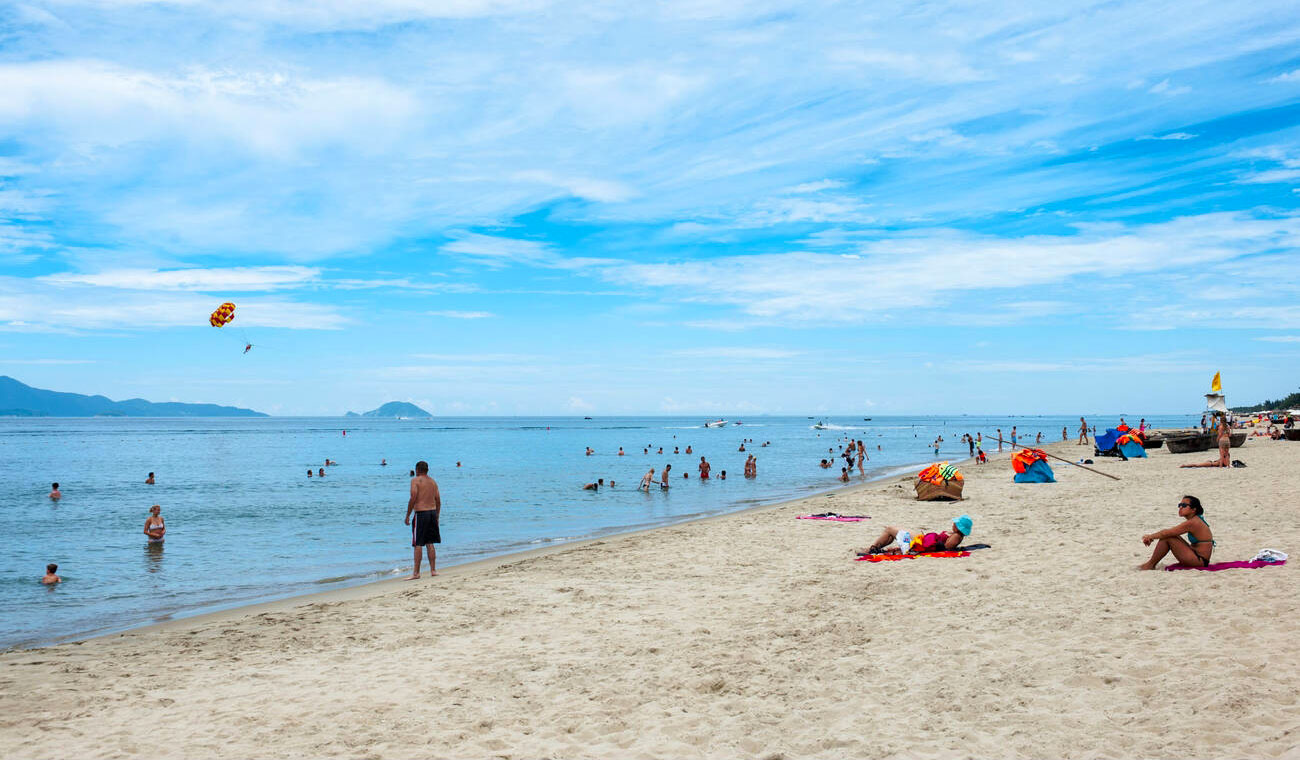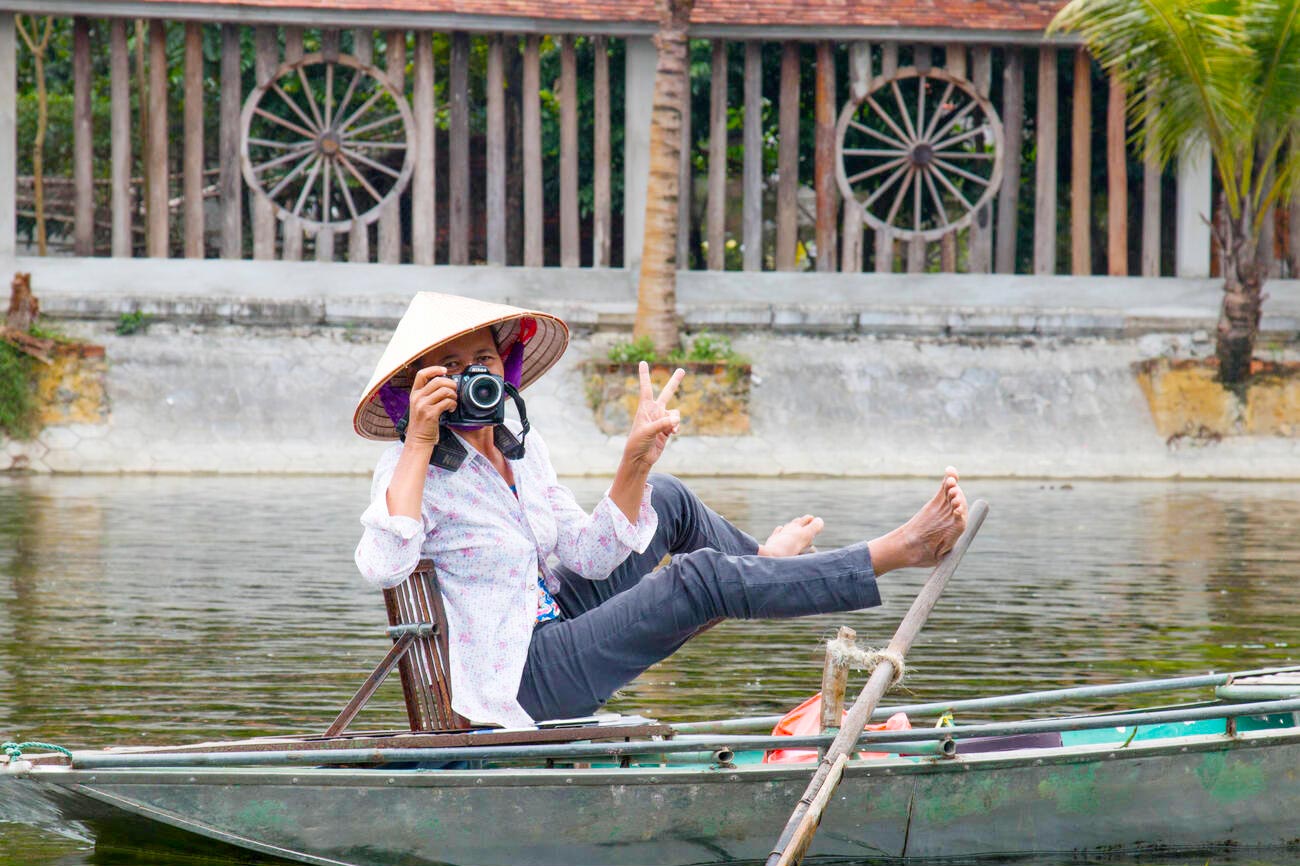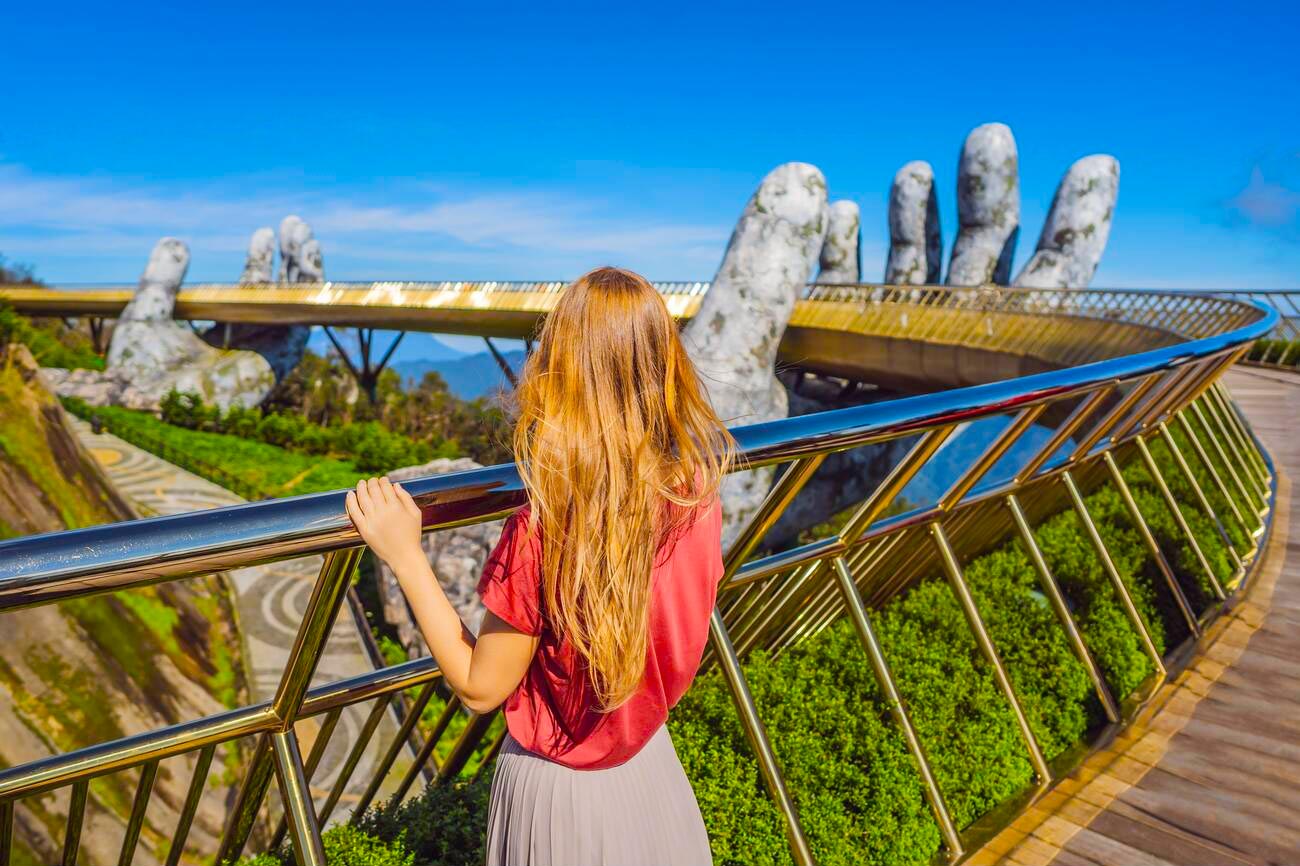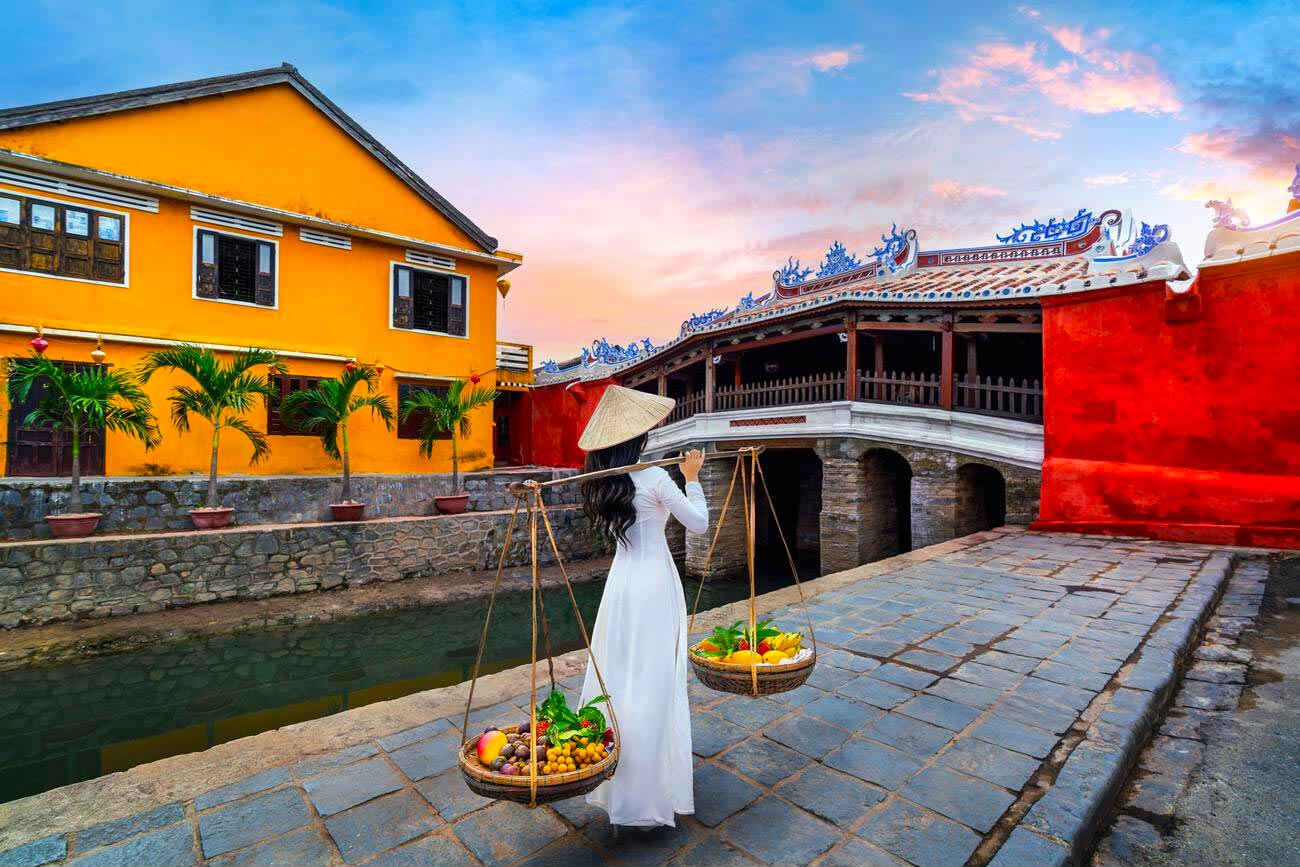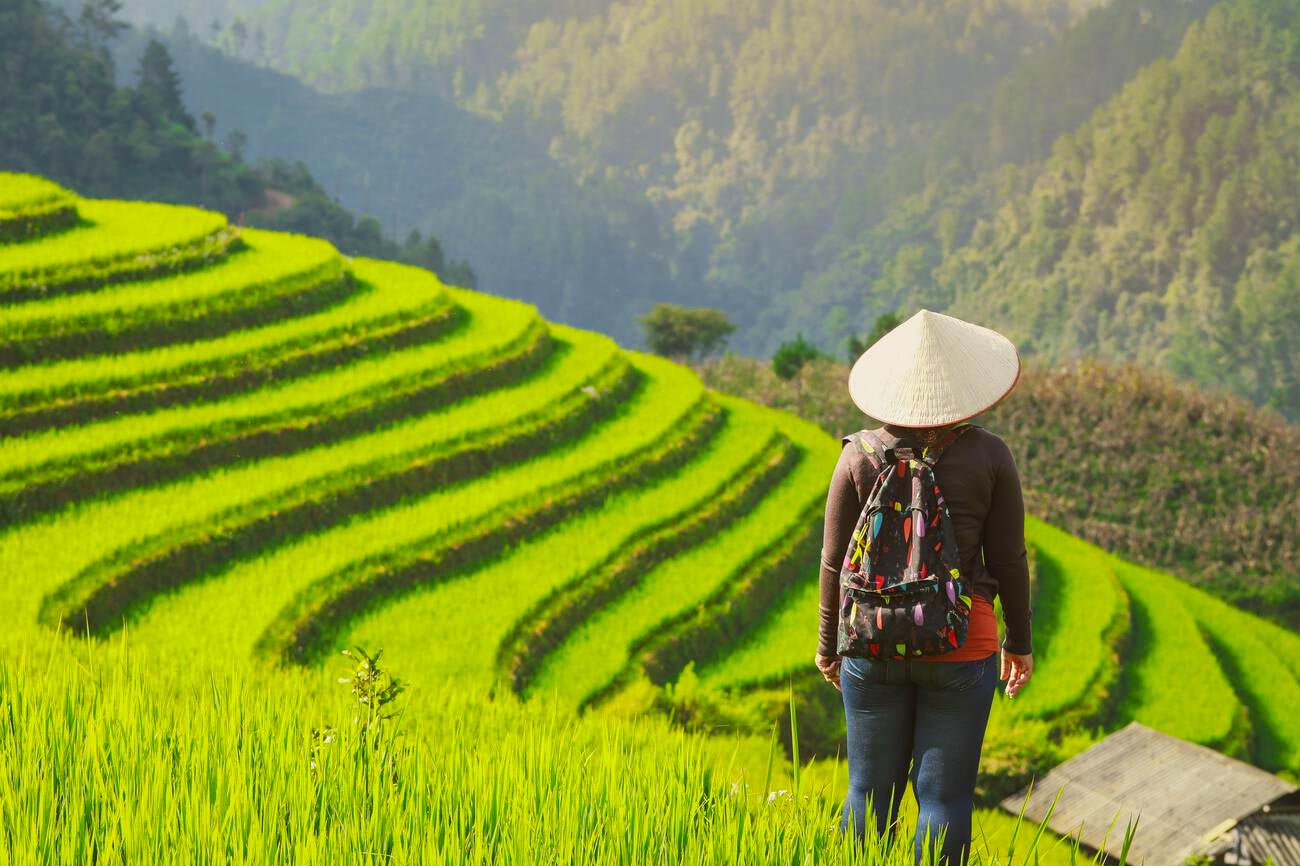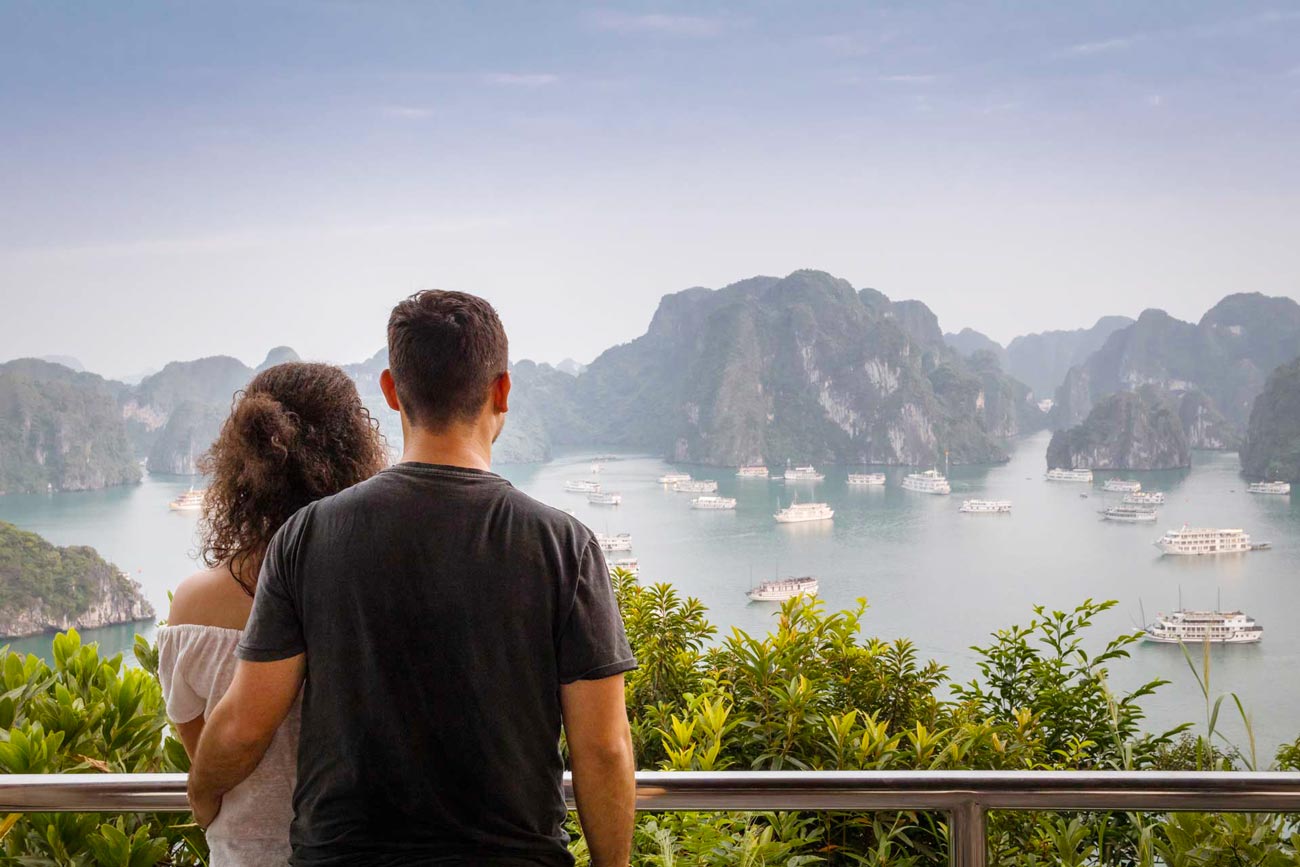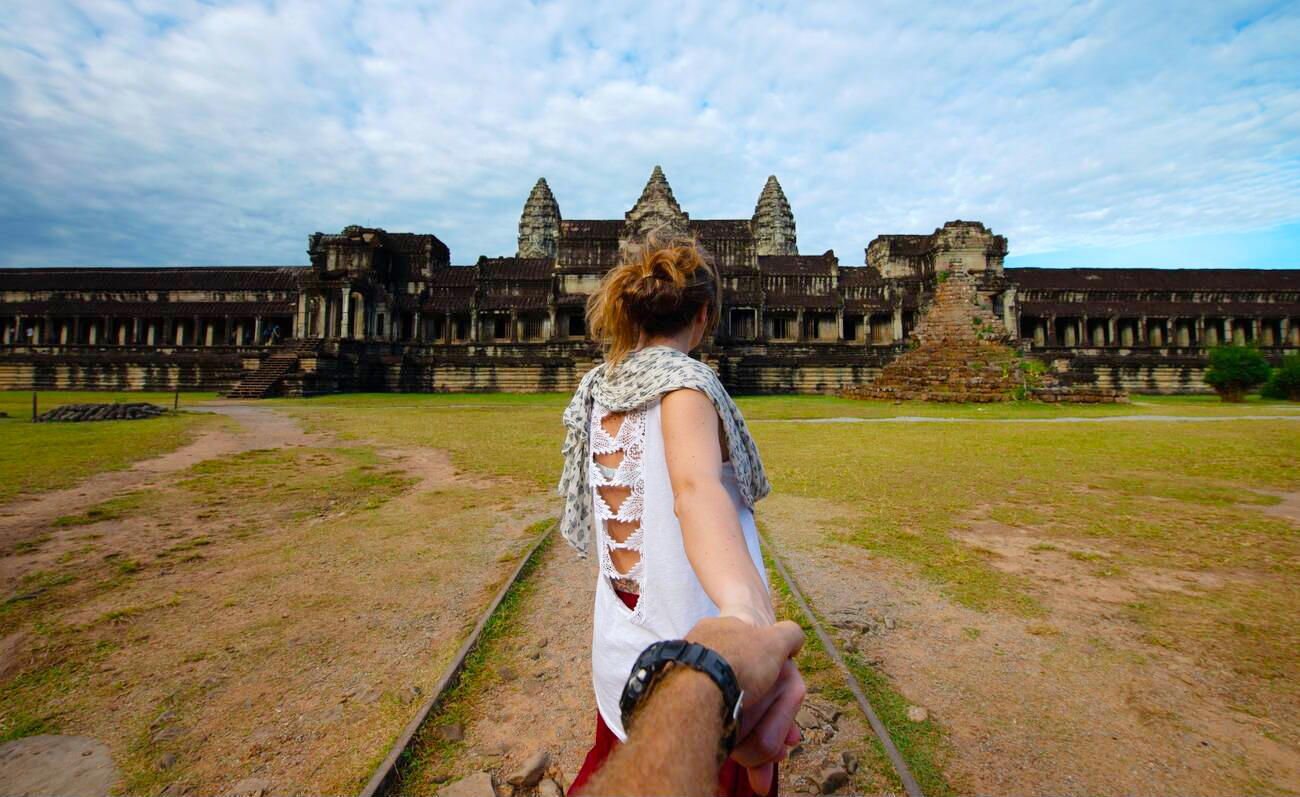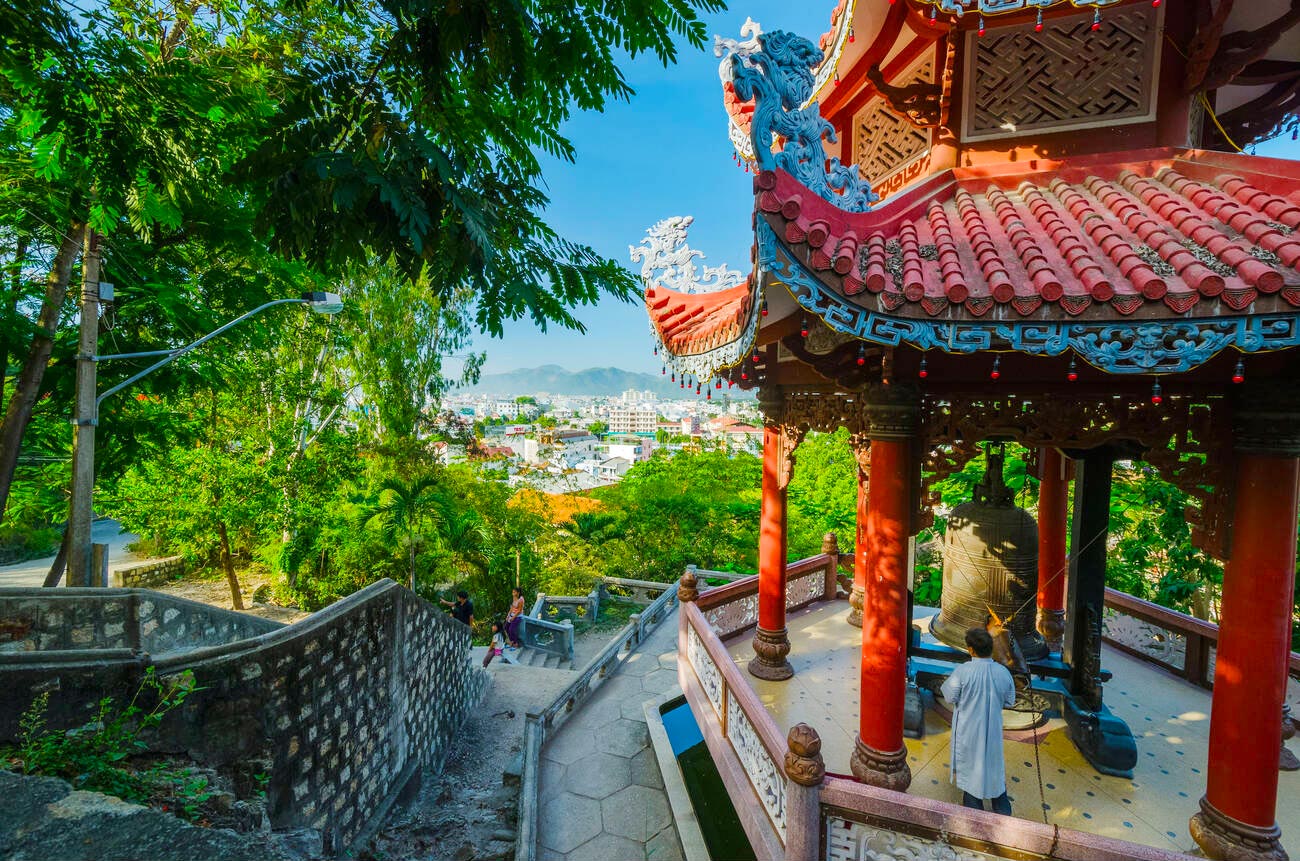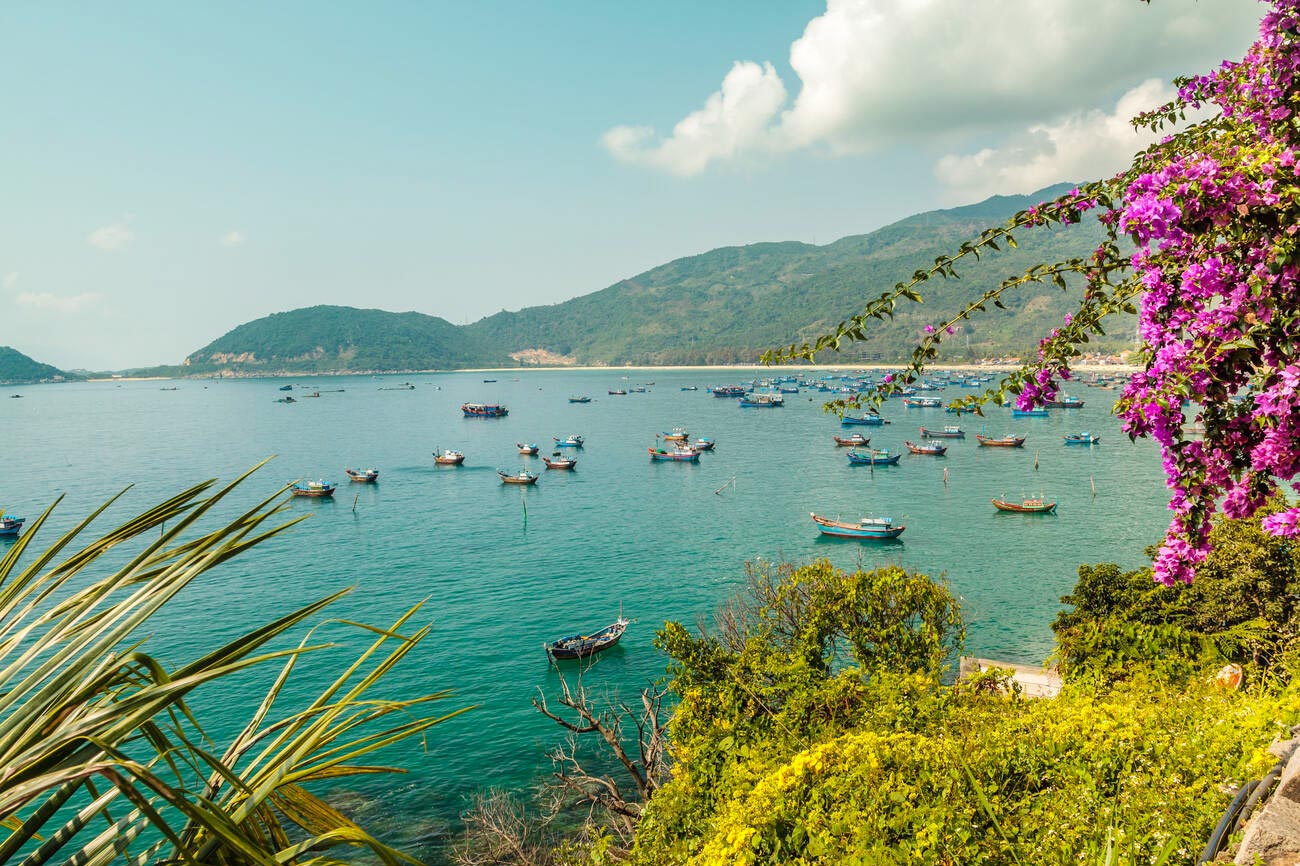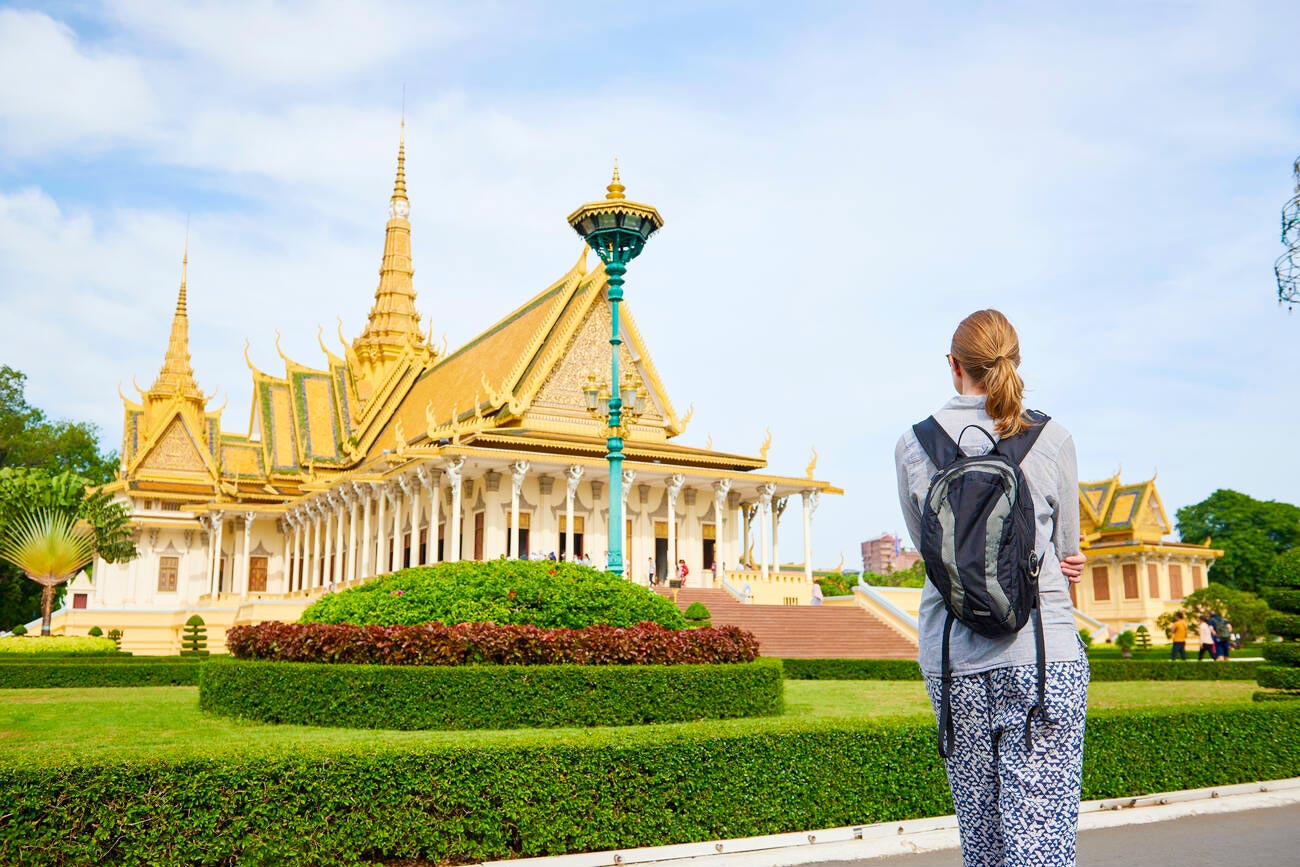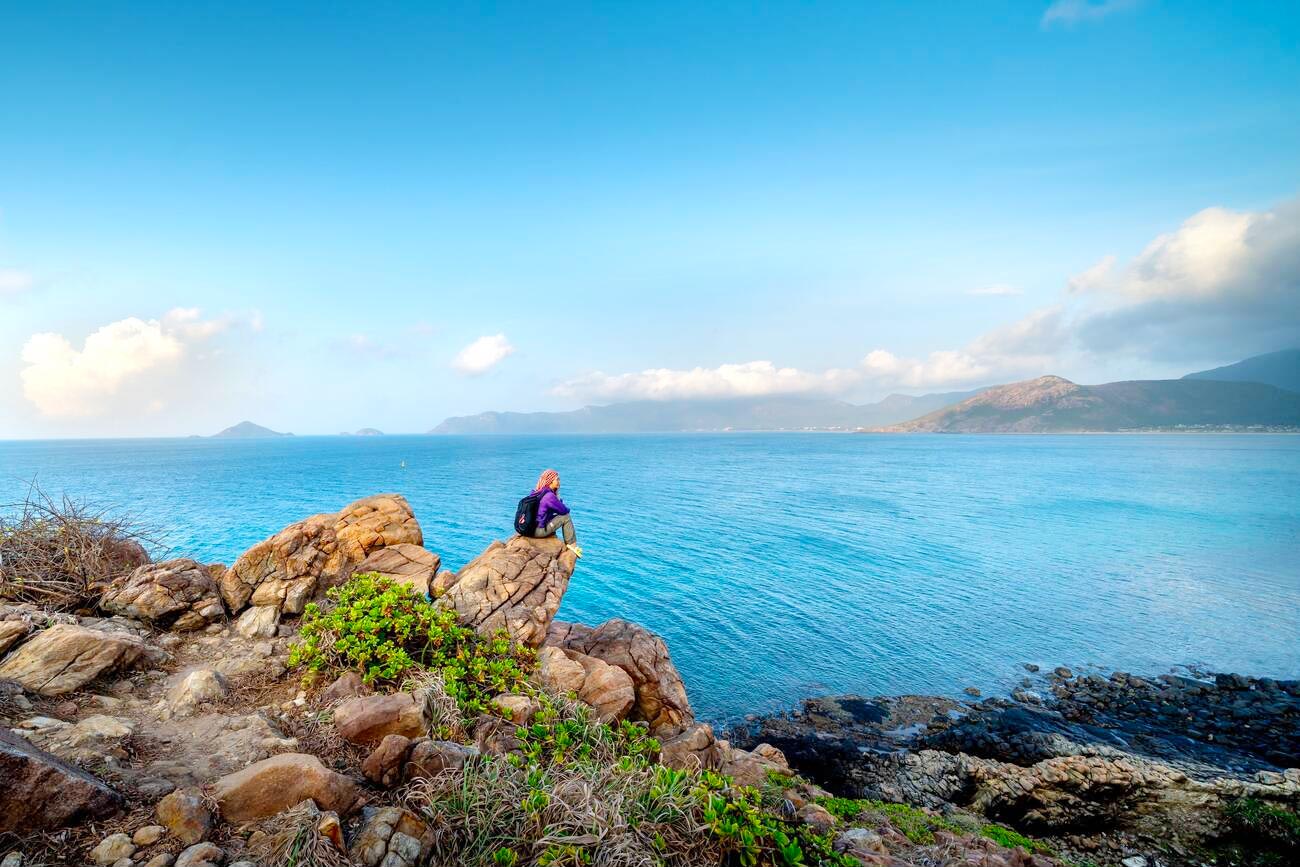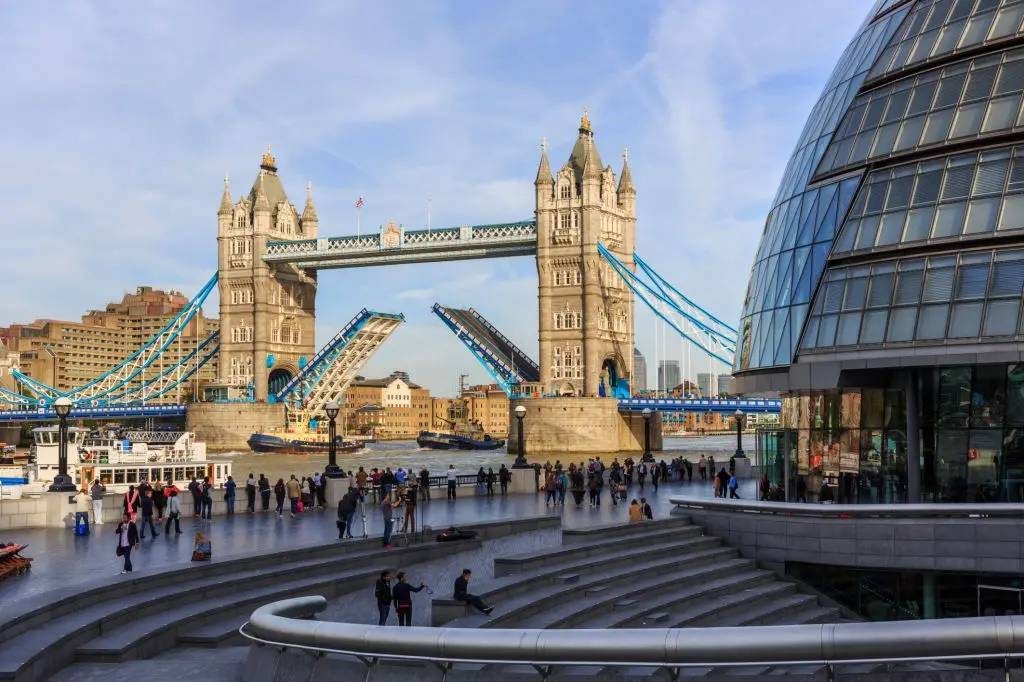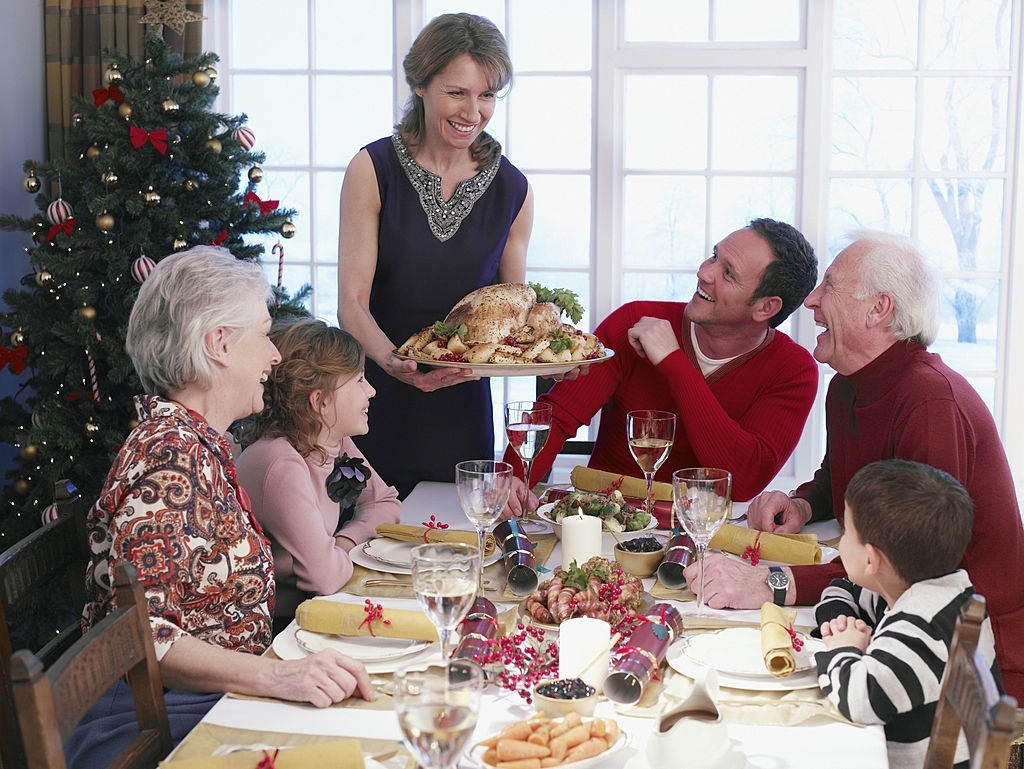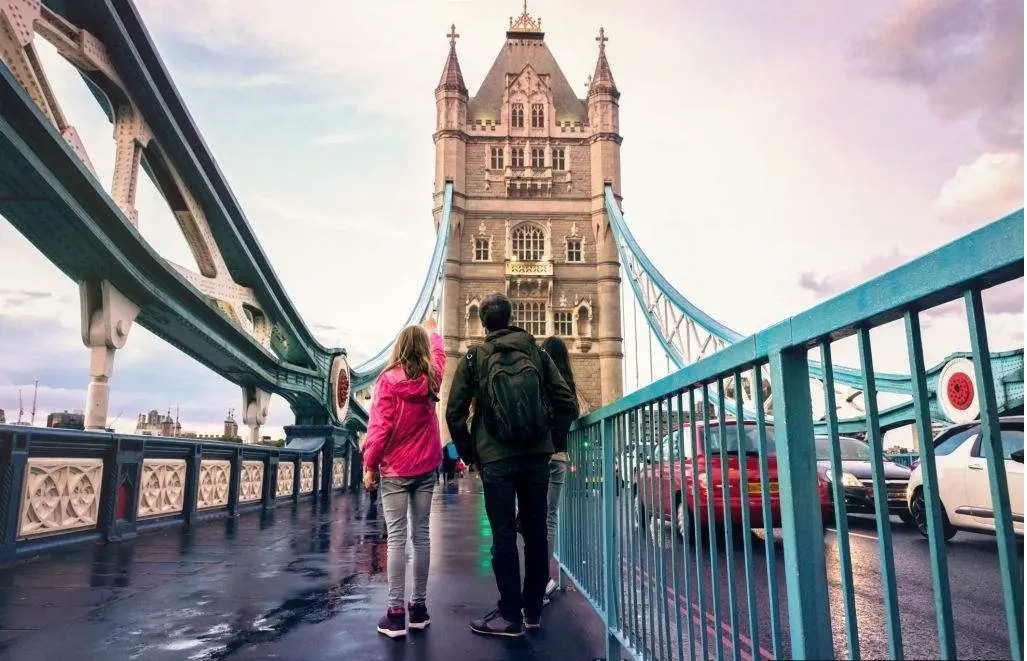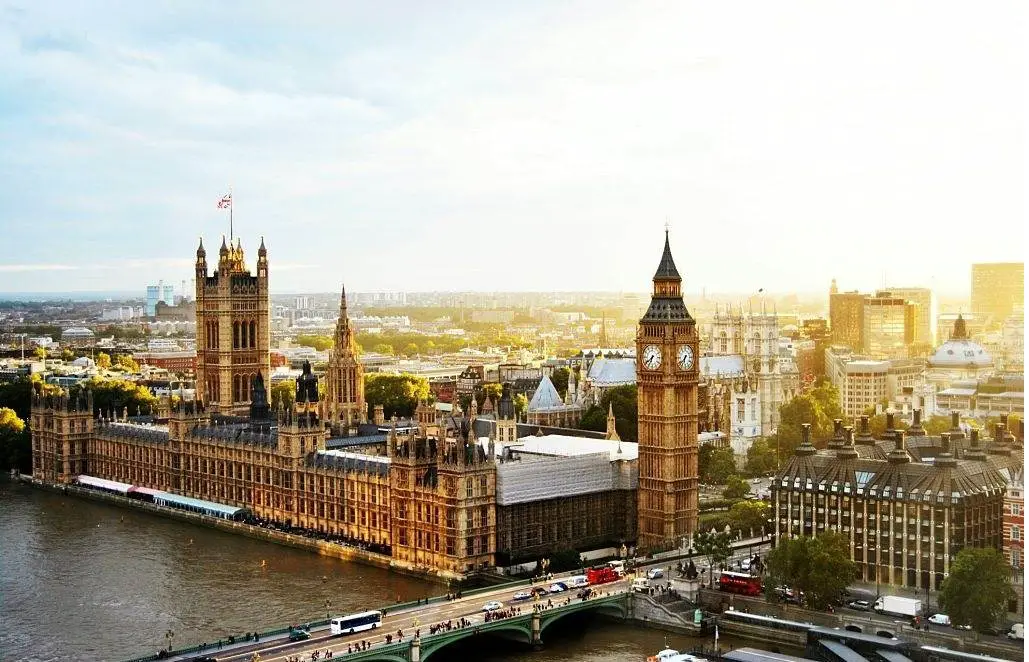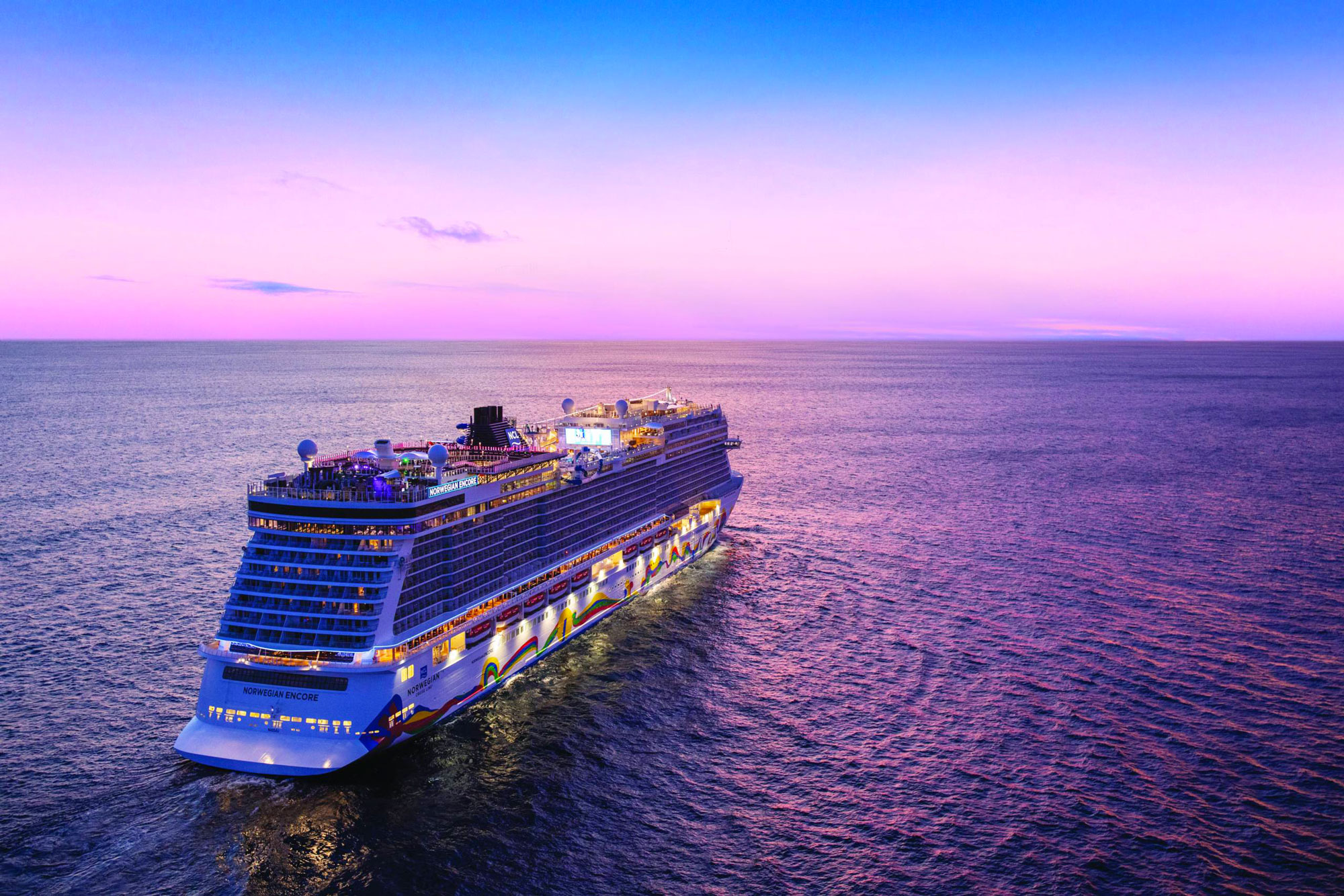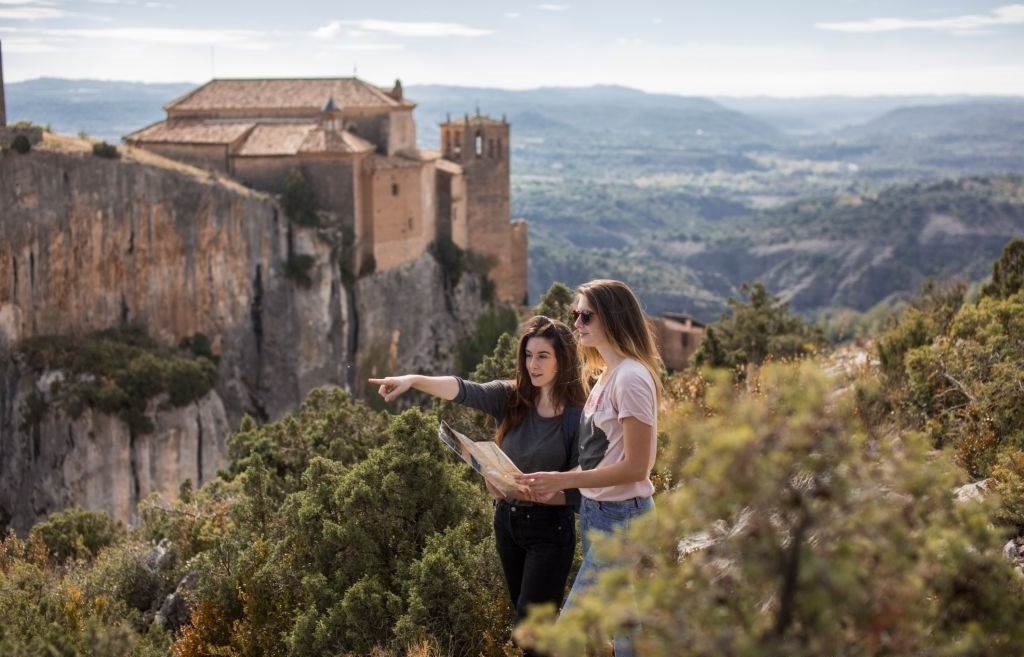Summary
- The article introduces eight compelling ways to explore the Mekong River Delta, from lively floating markets to homestays.
- Readers learn about the Delta’s unique cultural, agricultural, and ecological attributes that enrich every visit.
- Practical advice covers the best seasons, transportation, health tips, and sustainable tourism measures for a rewarding trip.
- The narrative encourages guests to embrace local lifestyles, appreciating how land and culture connect in this verdant region.
- Emphasis is placed on meaningful interactions with the local community, enhancing the authenticity of the travel experience.
If you are looking for activities to do at Mekong River Delta, you have come to the right place. This fertile region in southwestern Vietnam is widely renowned for its vibrant agricultural lands, meandering waterways, and cultural experiences reflecting rural Vietnam's heart and soul. Whether you love history, food, nature, or cultural immersion, this region offers countless things to see and do. From floating markets bursting with activity at dawn to serene boat rides through tropical canals, the Mekong Delta delivers an experience unlike any other in Southeast Asia.
In many ways, the Mekong River Delta is the lifeblood of Vietnam. Spanning about 40,000 square kilometers, it is home to more than 20 million people who depend heavily on the waters for rice cultivation and commercial trade. Locals have adapted their lifestyles to the tides and rhythms of the river, creating a way of life that revolves around riverside living, floating structures, and robust farming practices. This unique setting has developed a distinctive regional culture where open-air markets, lush orchards, and charming countryside scenes are integral to daily life.
The cultural richness here is matched only by the dramatic variety of landscapes. From small tributaries lined with mangrove forests to sprawling rice paddies dominating the countryside, the Mekong Delta unravels itself in endless green and shimmering waterways. The rich biodiversity and local wildlife are equally impressive, with birds, fish, and other creatures thriving in protected wetlands and estuaries.
Planning a trip to the Mekong River Delta may seem overwhelming because there is so much to see and do. To help you get started, we have gathered the top eight experiences that capture the best of what this region offers. The sections below will explore everything from cultural insights and culinary adventures to ecotourism and historical excursions. Embrace the Delta’s peaceful rhythm, meet friendly locals, and immerse yourself in a place that is truly the heart of southwestern Vietnam.
A Brief Overview of the Mekong River Delta
Before delving into the standout activities, having a background in the Mekong River Delta is helpful. Often referred to as the “Mekong River Delta” the Delta accounts for more than half of Vietnam’s rice and fruit production. The Mekong River, one of the longest rivers in Asia, flows from the Tibetan Plateau through China, Myanmar, Laos, Thailand, and Cambodia before reaching Vietnam, where it splits into several branches. These branches fan out to create a vast network of canals and streams, eventually emptying into the South China Sea.
Many people in this region live in small towns and villages along the riverbanks. Such water-based life has led to the prominence of floating houses, floating markets, and houseboats used as permanent homes or mobile shops. Traditionally, local transportation relied on small boats that navigated the canals. Today, roads and bridges have improved connectivity, but boat travel remains integral to everyday life. The Mekong Delta is ethnically diverse and home to Kinh, Khmer, Chinese, and Cham communities.
Best Time to Visit the Mekong River Delta
The Mekong Delta has a tropical climate, typically hot and humid year-round. The dry season is the most popular period for travelers from December to April. The weather is usually sunnier, making boat tours and outdoor activities more pleasant. However, the rainy season, from May to November, offers its charms. While heavy downpours can mark afternoons, the rainfall refreshes the scenery, making the rice fields and orchards lush and vibrant. Fruit harvests peak during the summer months, so if you are a fruit lover, you might enjoy a visit during the rainy season for the freshest tropical flavors. Bear in mind that occasional flooding can occur, and certain remote areas may be inaccessible or more challenging to navigate during the height of the rainy season.
Unforgettable Activities to Do at Mekong River Delta
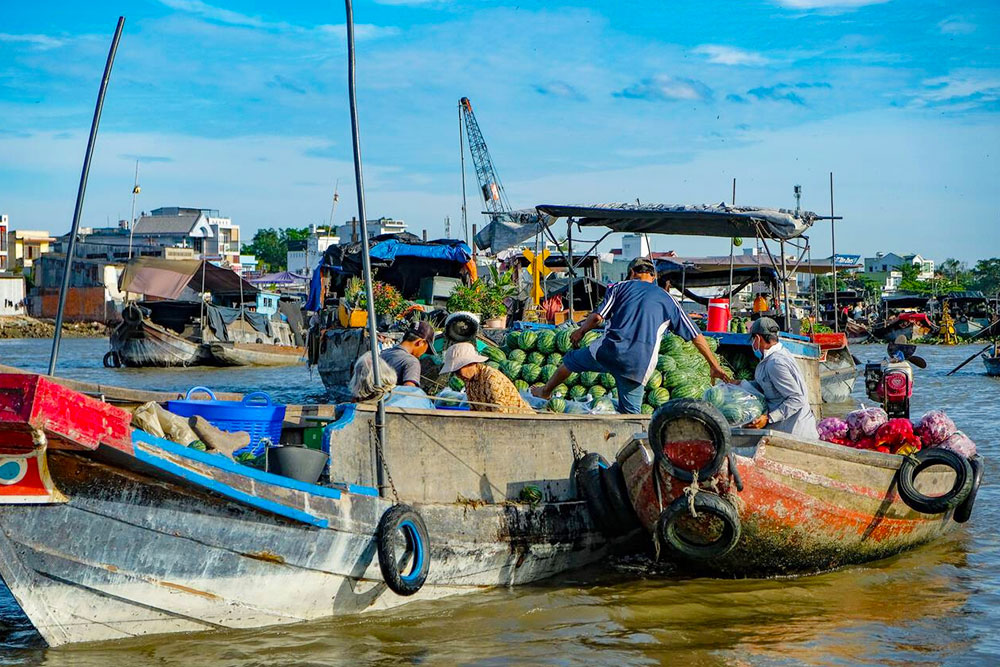
Many travelers envision iconic floating markets and boat rides through narrow canals when considering the Mekong Delta. While these experiences are essential, the region has much more to offer. From cultural encounters to eco-adventures, the following sections highlight the eight best activities for you to try.
1. Exploring the Famous Floating Markets
Talking about the Mekong River Delta without highlighting its floating markets is impossible. These markets typically start at daybreak until mid-morning, creating a colorful spectacle of commerce on the water. Wooden boats brimming with fresh produce, household goods, and street food drift around, with vendors hoisting poles topped with samples of their wares. One of the most famous is Cai Rang Floating Market near Can Tho. Arriving early is key, as the peak trading happens around sunrise.
A visit here allows you to witness local life in action. You can expect to see transactions happen seamlessly from boat to boat. Locals often serve hearty bowls of steaming noodles or iced coffee on their small vessels, turning shopping into an immersive culinary event. While tourists are welcome, many of these markets remain primarily local so you will get a genuine look at the daily hustle and bustle. Bring a good camera or phone to capture the riot of color and vibrancy, but remember to be respectful; vendors are here to conduct real business, so a friendly demeanor goes a long way.
To make the most of this experience, consider hiring a local guide who knows the area’s history and the best vantage points for observing the action. Some guided tours offer an early morning pick-up from your hotel, ensuring you arrive in time to witness the height of trading. Whether you choose an organized tour or go independently, floating markets are an absolute must for anyone visiting the Mekong Delta.
2. Cruising Through Narrow Canals on a Sampan
After exploring the bustling floating markets, a quieter side of the Delta awaits. One of the most quintessential experiences is a leisurely sampan ride through the smaller tributaries and canals that snake through the countryside. These narrow waterways are often lined with lush foliage, palm trees, and stilt houses. As you glide, you will likely spot locals going about daily routines, fishing, washing clothes by the riverbanks, or tending to minor boat repairs.
“Sampan” refers to a small wooden boat with a shallow draft, perfect for navigating the Delta’s narrower waterways. Many sampans are paddled by local women wearing the traditional conical hat (non la), which adds to the cultural richness of the journey. You might pass through arches of coconut palm fronds reminiscent of tunnels of greenery. It is a tranquil experience that allows you to slow down, breathe fresh air, and appreciate the gentle pace of life that defines the Delta.
During the sampan ride, your guide may highlight different native plants, local birds, or interesting architectural features along the banks. If you are particularly adventurous, some tours allow you to take the paddle yourself for a bit of an upper-body workout. Watch for local fruit orchards, especially in areas like Vinh Long or Ben Tre, where coconut plantations sprawl widely. This is often the moment travelers begin to embrace the quieter side of the Mekong truly.
3. Tasting the Regional Cuisine and Street Food
Vietnamese cuisine is celebrated worldwide, and the Mekong Delta holds its gastronomic treasures. Thanks to the alluvial soils and abundant rivers, the region is a powerhouse of fresh fruits, vegetables, fish, and shrimp. Local specialties often feature coconut milk, river prawns, and distinctive herbs. One of the best ways to experience this culinary richness is to wander through a floating or land-based market and sample street food dishes prepared on the spot.
An iconic street food dish in the Delta is “Banh Xeo” a crispy rice pancake stuffed with shrimp, beansprouts, and pork slices, typically dipped in a tangy fish sauce. Another favorite is “hu tieu,” a flavorful rice noodle soup often garnished with pork, shrimp, quail eggs, and fresh herbs. If you have a sweet tooth, you are in luck. Coconut-based sweets, such as coconut candy and rice cakes infused with pandan leaf, are widely available. Do not forget to try fresh tropical fruits like jackfruit, dragon fruit, and mango, often coming straight from nearby orchards.
For an immersive culinary experience, you might join a cooking class hosted by a local family. Many small homestays and eco-lodges offer this opportunity. You will begin by visiting a local market to learn about essential ingredients, then return to the homestay to prepare a meal under the guidance of your hosts. The result? A deeper appreciation not only for the flavors of the region but also for the warmth and hospitality of the local people.
4. Visiting Fruit Orchards and Coconut Plantations
One of the most delightful things about the Mekong Delta is its year-round bounty of fruits. If you love tropical flavors, schedule a visit to one of the many orchards that open their doors to travelers. The provinces of Ben Tre, Vinh Long, and Tien Giang are particularly famous for their fruit gardens, where you might find pomelo, durian, rambutan, guava, and longan hanging heavily from the branches. Some orchards allow visitors to pick their fruit and sample fresh under the shade of the trees.
Ben Tre is often called the “Coconut Kingdom,” thanks to its expansive coconut plantations. While traveling here, you can witness how locals utilize every part of the coconut, from the shell to the flesh, for products as diverse as coconut candy, activated charcoal, and building materials. You can watch the candy-making process in local factories or family workshops and try some samples. This direct insight into local production offers an excellent way to support community-based tourism, as your visit helps sustain the livelihoods of small-scale farmers and artisans.
Beyond eating fruit or tasting coconut candy, these orchard visits allow you to see the region’s sustainable agricultural practices. Farmers in the Delta have cultivated methods that respect the land and optimize their yields despite ever-changing water levels. Understanding these practices helps travelers appreciate the harmonious relationship between the local communities and their natural environment.
5. Exploring Rural Villages and Cycling Through Rice Fields
Despite its popularity among tourists, much of the Mekong Delta remains rural, offering a refreshing change of pace from Vietnam’s more urban areas. If you yearn to escape the crowds, consider renting a bicycle and pedaling along village roads. You will find paths that wind around rice paddies, across small bridges, and through sleepy hamlets. You might even stumble upon a rural temple, a local school, or a friendly family selling fresh coconuts by the roadside.
These cycling trips offer a firsthand look at everyday life. Children might greet you with enthusiastic waves, and you could see farmers tending to their fields, often using traditional methods. Depending on the season, you might cycle past fields in different stages, some with newly planted seedlings in vibrant green, others with mature stalks that have turned golden, ready for harvest. The scenery changes as you move from one area to another, ensuring an ever-evolving backdrop of water, greenery, and village life.
Several tour operators and local homestays organize guided cycling tours with stops for refreshments and photo opportunities. Some even include visits to local temples, craft villages, or scenic spots to enjoy lunch on a wooden deck built over a fishpond. Whether you are an experienced cyclist or just looking to spend a day in the countryside, a two-wheeled adventure will open your eyes to the tranquil charms of rural Vietnam.
6. Delving into Cultural and Historical Sites
While the Delta’s fame largely stems from its natural beauty and agricultural wealth, the region also holds historical and cultural landmarks worth exploring. One such site is the Tra Vinh province, known for its large Khmer population and impressive Buddhist pagodas. Ornate temple complexes with spires and intricate carvings reflect centuries of Khmer tradition, providing a glimpse of the spiritual life that thrives here.
Another historically significant place is the former battlefield region around the Plain of Reeds (Dong Thap Muoi), a vast wetland that served strategically during the Vietnam War. Here, you can explore war memorials and museums that detail the hardships faced by Vietnamese soldiers and civilians. Meanwhile, Cai Be and Sa Dec have a certain colonial charm, evidenced by French-influenced architecture and old Catholic churches. The house of Huynh Thuy Le in Sa Dec, made famous by the French novelist Marguerite Duras in her work “The Lover,” is an exquisite example of Sino-French design and remains open to visitors.
Small, lesser-known villages also hold workshops on traditional crafts, such as mat weaving, pottery, and rice paper making. Stopping by these places allows you to see artisans at work, preserving skills passed down through generations. Whether drawn to Buddhism, history, or local craftsmanship, cultural exploration in the Delta can add depth to your journey and broaden your understanding of this multifaceted region.
7. Birdwatching and Nature Reserves
Beyond agricultural land, the Mekong Delta boasts an ecological richness that is increasingly protected through nature reserves and national parks. For wildlife enthusiasts, birdwatching is a prime activity. Places like the Tra Su Cajuput Forest in An Giang province feature flooded forests with labyrinths of narrow waterways covered in vibrant green duckweed. Here, you can take a small boat into the heart of the wetland, where a rich diversity of bird species, herons, storks, and egrets nest in the treetops.
The Cai Be River and the Tam Nong Bird Sanctuary in Dong Thap province are equally remarkable for avian biodiversity. Early mornings and late afternoons are typically the best times to spot large flocks of birds returning to their roosting sites. Guides can help you identify specific species, and some areas have watchtowers or walking paths to get a better vantage point. Birdwatching in these areas is not just about the birds; the entire ecosystem, from water plants to aquatic creatures, adds to the environment’s mesmerizing quality.
For those interested in broader ecological experiences, U Minh Thuong National Park in Kien Giang province is known for its peat swamp forests and diverse wildlife, including mammals like otters and civets. Ecotourism is rising in the Delta, and with it comes a more significant emphasis on conservation and sustainable tourism practices. By visiting these reserves, you preserve these habitats and support local efforts to protect the environment.
8. Staying at a Local Homestay for a Cultural Immersion
To truly embrace the Mekong Delta’s unique lifestyle, consider staying with a local family in a homestay. This accommodation is especially popular in places like Vinh Long or Ben Tre, where families often convert part of their riverside home to host visitors. Staying in a homestay offers more than just a place to sleep; it is a cultural exchange, allowing guests to participate in daily activities like cooking, farming, or fishing with the hosts.
Sharing meals in a homestay is often a highlight of the experience. You might gather around a simple wooden table on the porch and enjoy home-cooked dishes featuring local produce, freshly caught fish, and fragrant herbs. Your hosts may share their family recipes, stories of the region’s past, and personal insights into the Delta's changes. In some homestays, you can assist in preparing dinners or learn how to make traditional handicrafts.
The accommodations themselves vary widely. Some are pretty basic, with shared bathrooms and simple mattresses with mosquito nets, while others are more modern and include private rooms with fans or air conditioning. Regardless of luxury, your hosts' authenticity and warmth make the experience memorable. By staying in a homestay, you gain a deeper understanding of local life and directly support the community, ensuring that tourism benefits local families.
Practical Tips for a Successful Mekong River Delta Journey
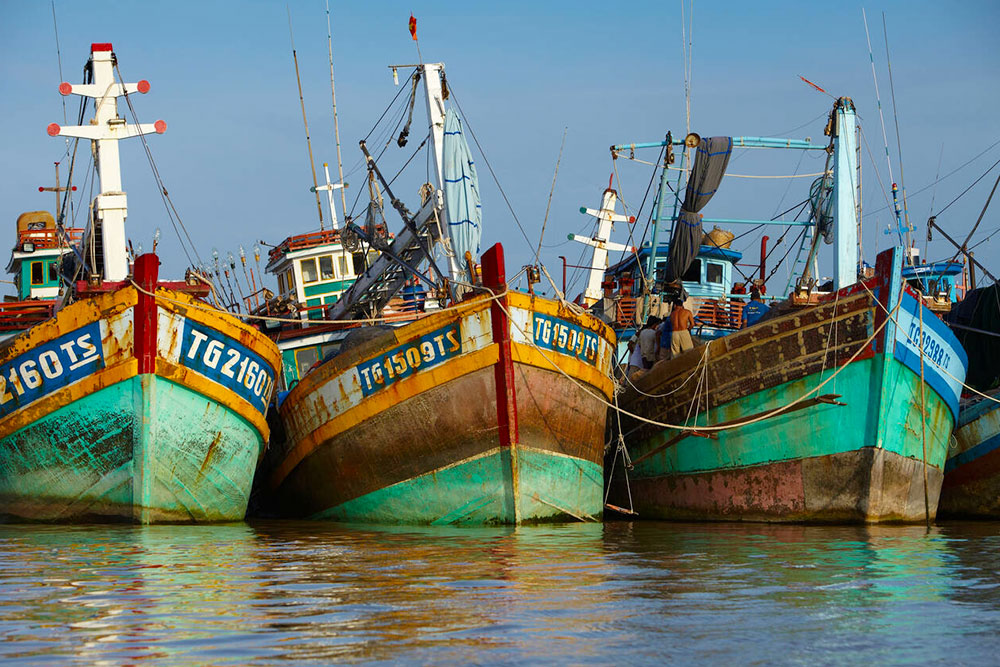
To help you get the most out of your trip, here are a few practical travel tips and considerations:
- Plan Your Transportation: While many travelers opt for organized tours departing from Ho Chi Minh City, independent travel is possible. Local buses connect major cities in the Delta, and private car hires or motorbike rentals are also popular. For shorter distances, ferries and water taxis are a unique and scenic way to move around.
- Health and Safety: The Mekong Delta is a tropical environment with abundant insects, including mosquitoes. Bring insect repellent, and consider wearing long sleeves and pants, especially at dawn and dusk. Drink bottled or filtered water, and be mindful of food hygiene when sampling street foods. Although most are delicious and safe, picking a stall with a good local clientele is always wise.
- Respect Local Customs: While the Delta is generally relaxed, certain temples or historical sites may require modest attire. Always ask permission before photographing people, especially in more rural areas, and learn a few Vietnamese phrases to endear yourself to your hosts.
- Sustainable Tourism Practices: As ecotourism gains popularity, be mindful of your environmental impact. Carry reusable water bottles, avoid littering, and support businesses that demonstrate responsible practices, whether homestays, tour agencies, or small family-run workshops.
- Flexibility in Itinerary: Weather can be unpredictable, and so can water levels. If you are traveling during the rainy season, allow some extra days in case of flooding or transportation disruptions. Having a bit of flexibility will let you adapt your schedule to any unexpected changes.
Embracing the Delta’s Rhythms
At its heart, the Mekong Delta is a place of flowing waters and flowing stories. Each tributary, orchard, floating market stall, and rural village has its tale of resilience, heritage, and community. The top eight activities recommended here merely scratch the surface of what you can discover. Every bend in the river, every market interaction, every home-cooked meal reveals another layer of the Delta’s charm.
Perhaps the most remarkable aspect is how seamlessly life and landscape blend. The people of the Delta do not just live by the river; they live with it, drawing sustenance and prosperity from its ever-shifting tides. Visitors who come with an open mind and an eagerness to learn will find themselves touched not only by the region’s beauty but also by the generosity and kindness of its inhabitants.
Whether you choose to focus on cultural immersion, culinary explorations, historical insights, or natural wonders, the Mekong Delta is a destination that encourages you to slow down, appreciate the moment, and engage all your senses. Beyond the sightseeing, there is no shortage of reasons to linger here; it is an invitation to experience a distinctive way of life that has thrived for centuries.
Secure your customized Vietnam tour now and elevate your journey. By selecting our tours, you’ll experience the country’s breathtaking scenery, immerse yourself in its vibrant cultural tapestry, and explore remarkable sights, creating lasting memories.

